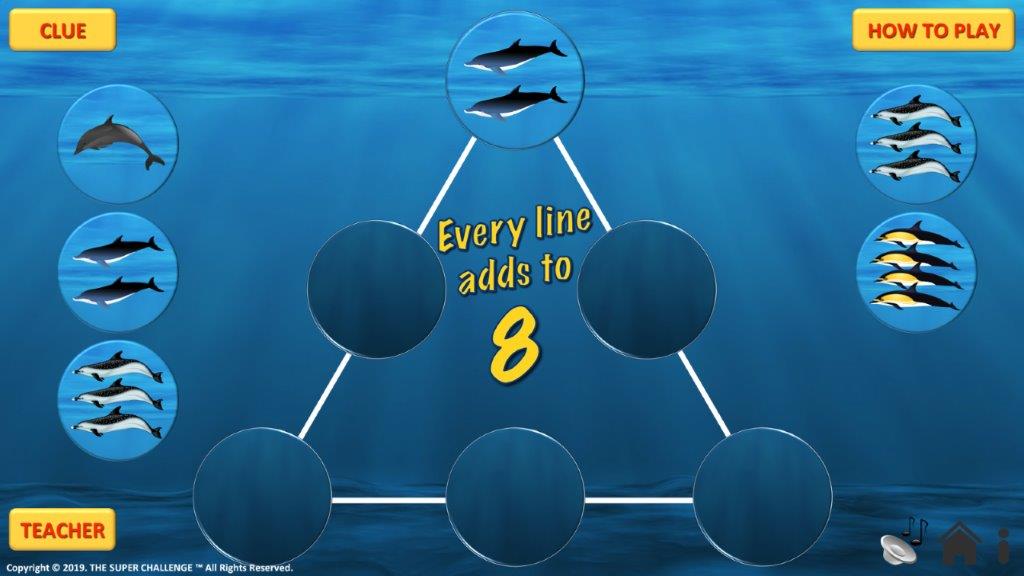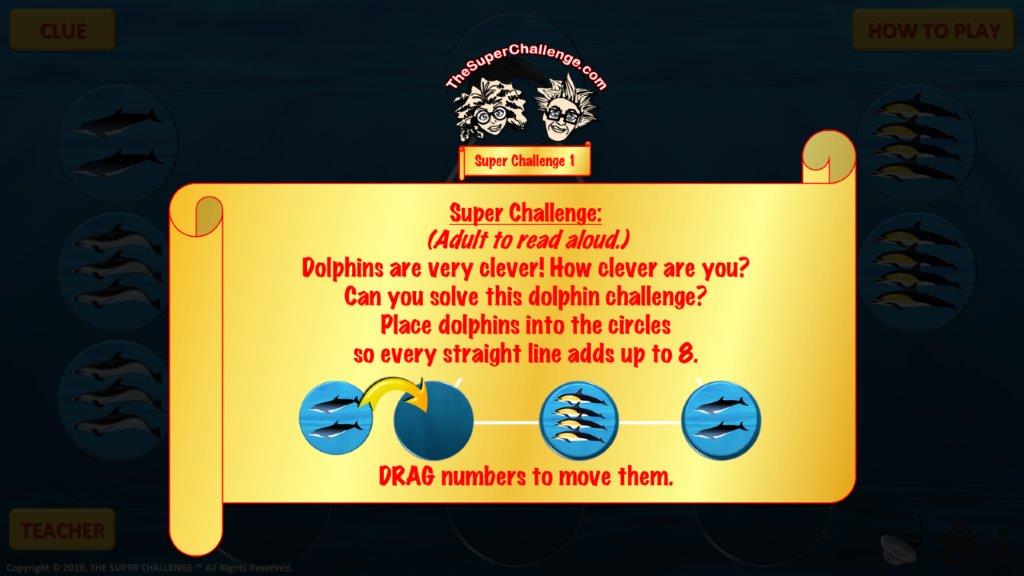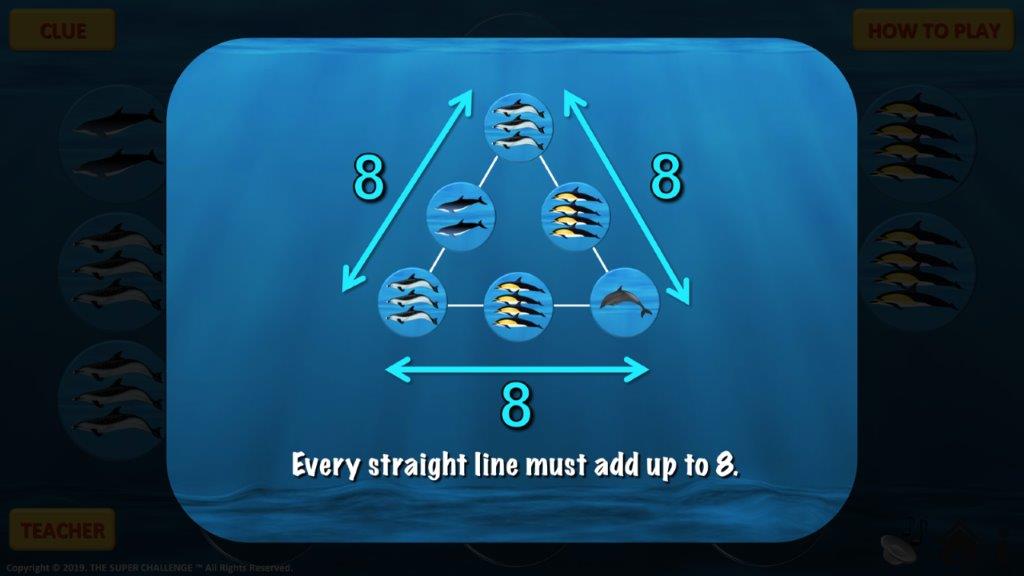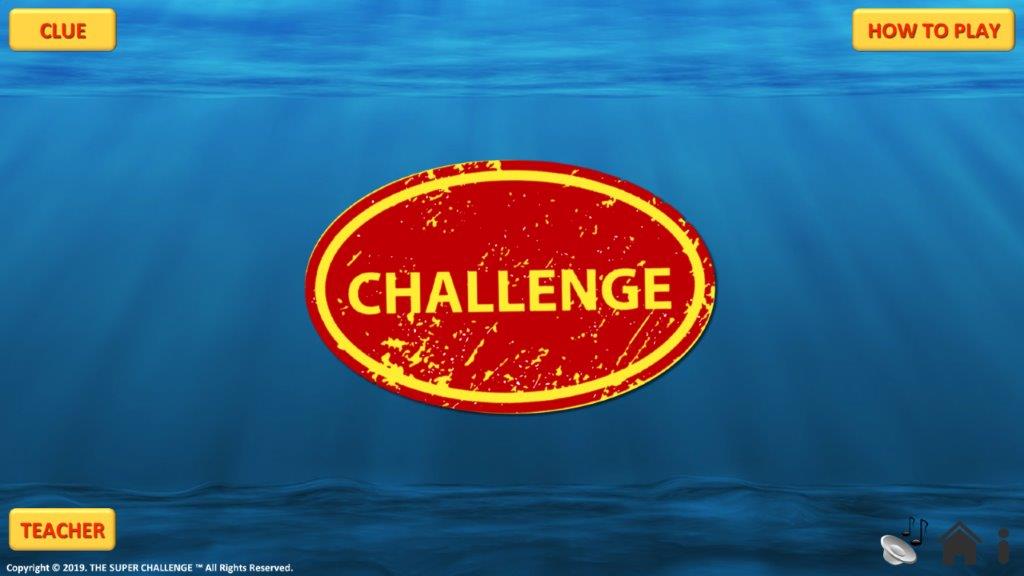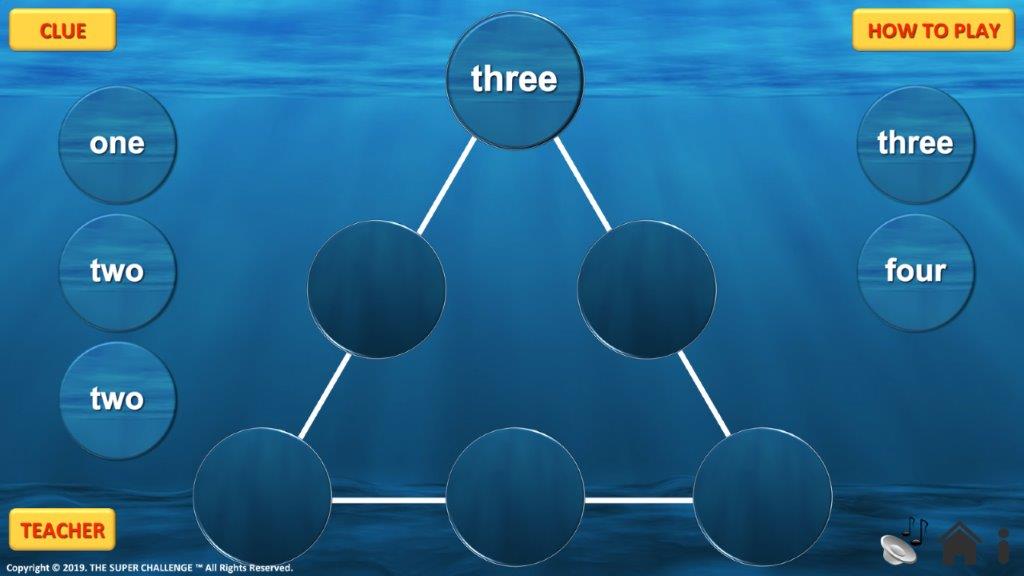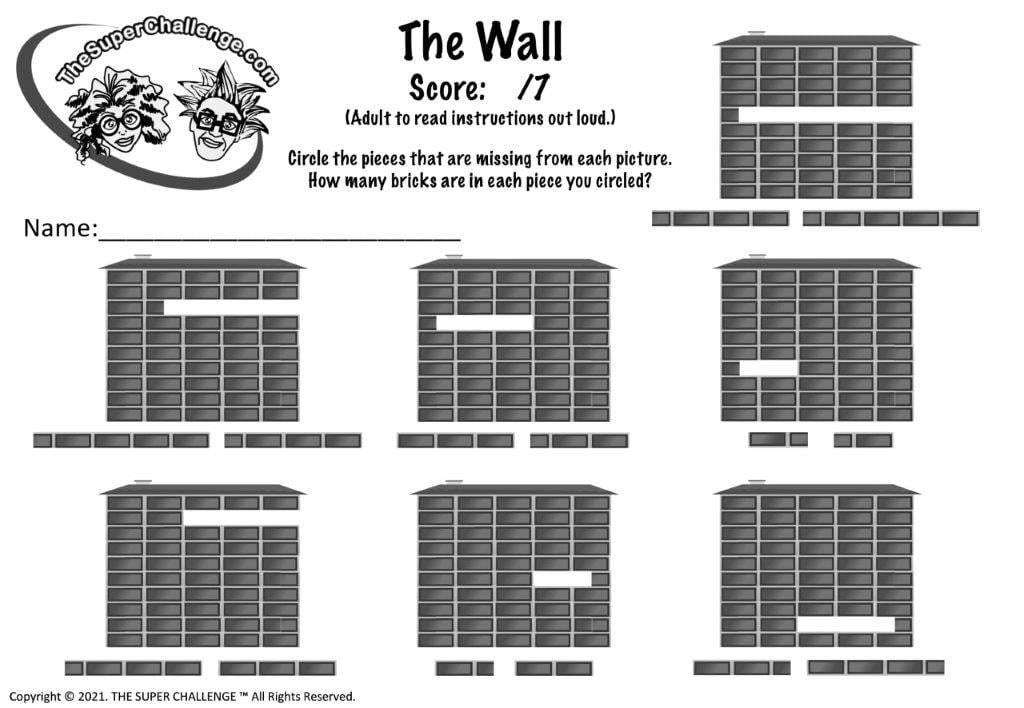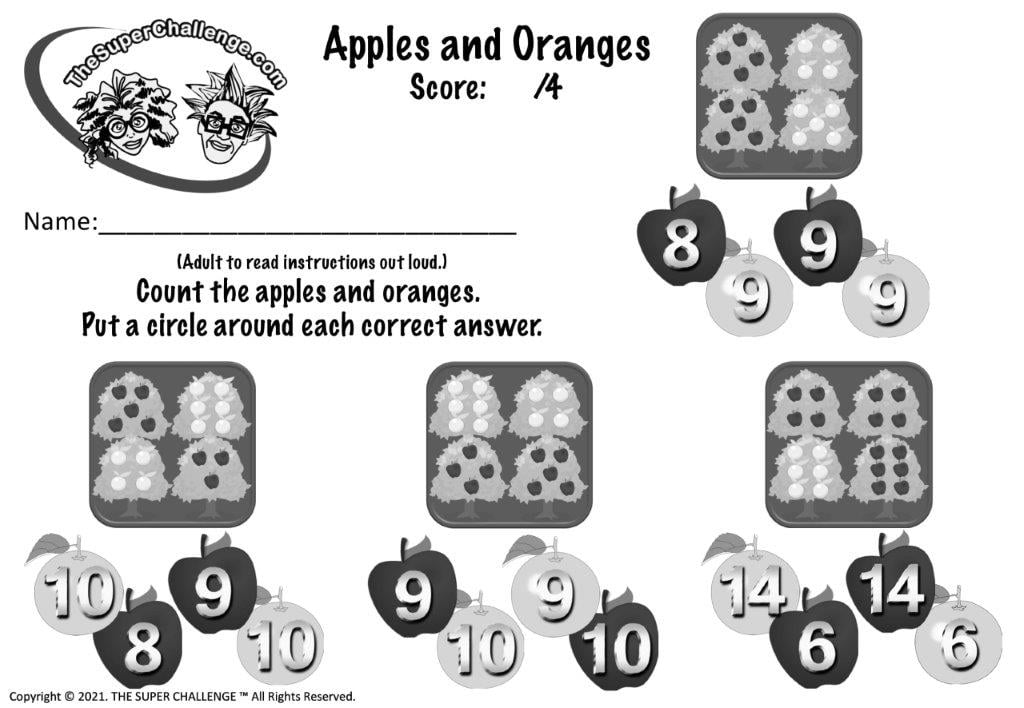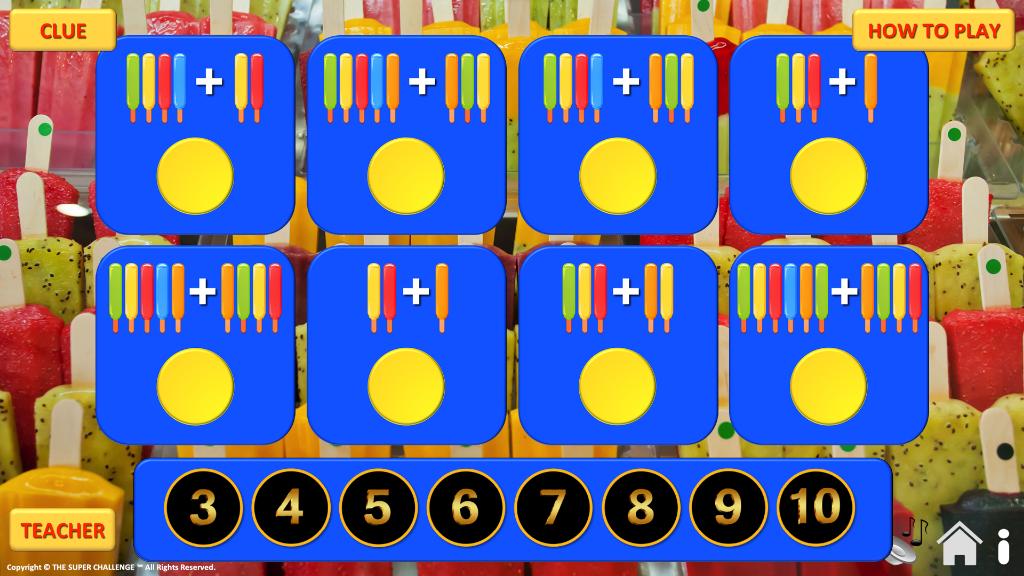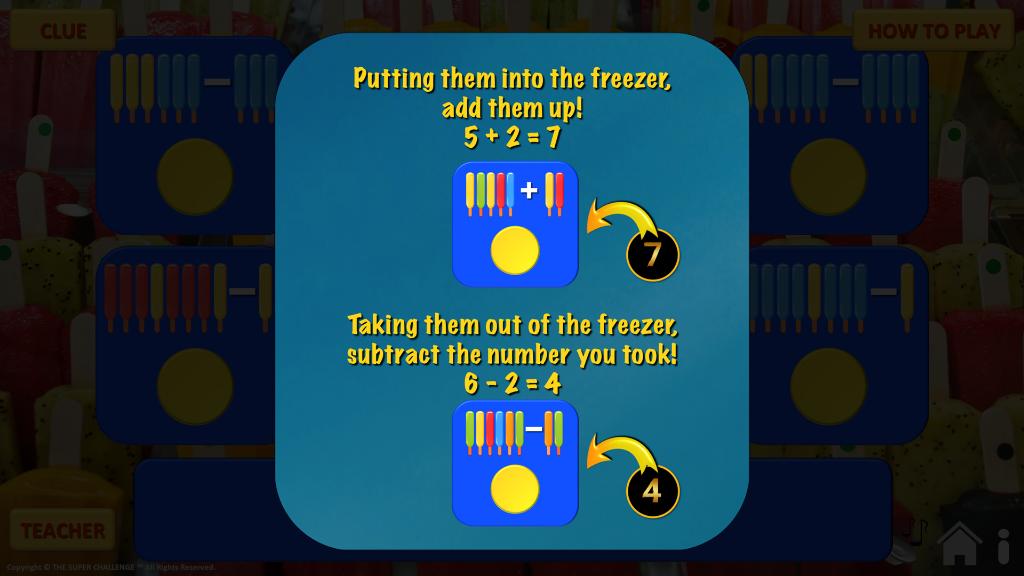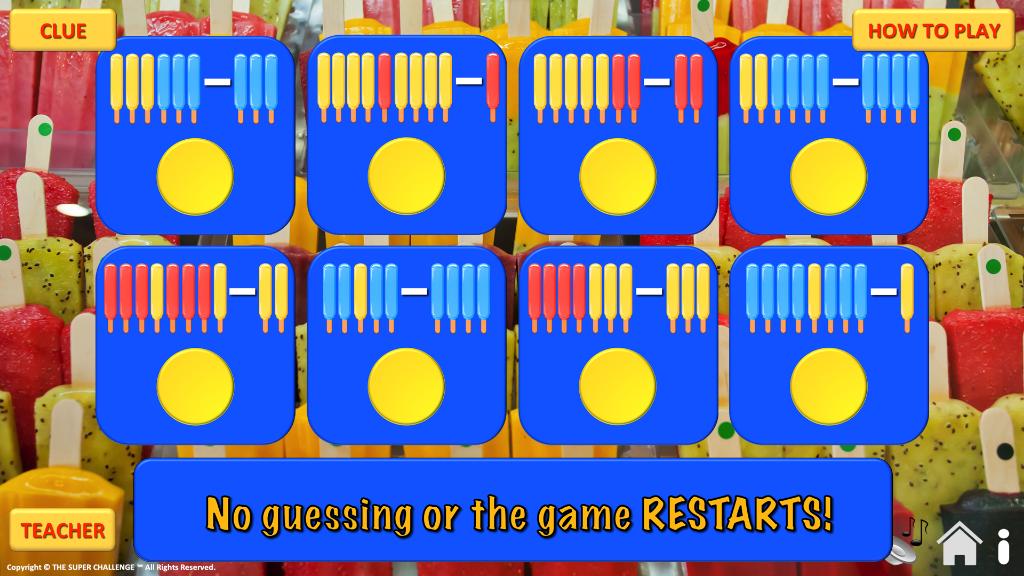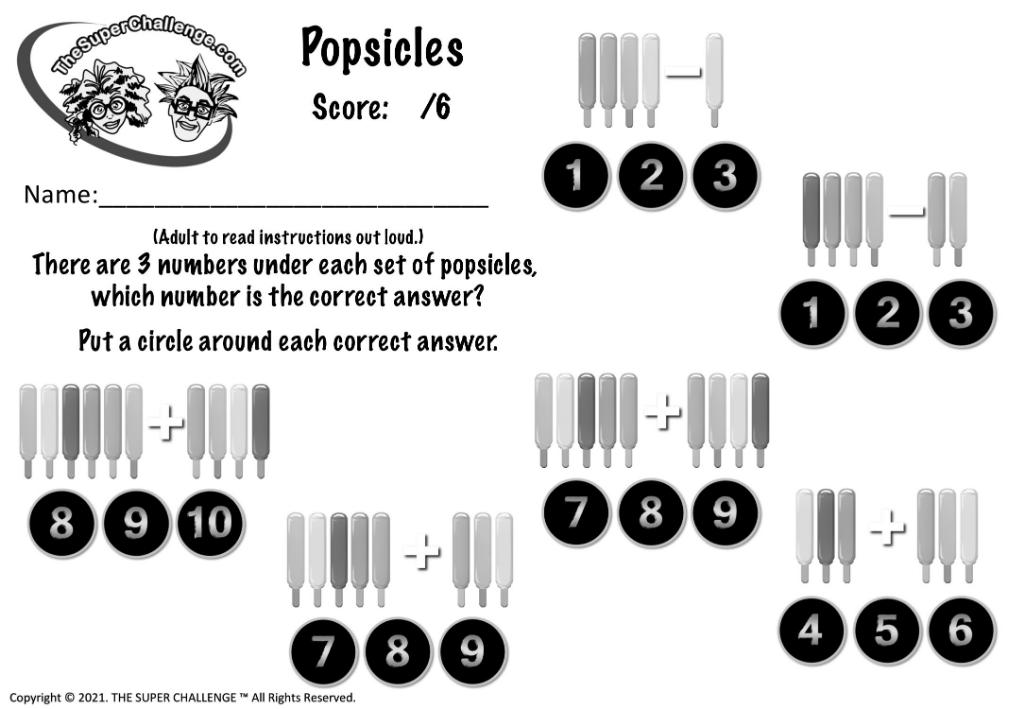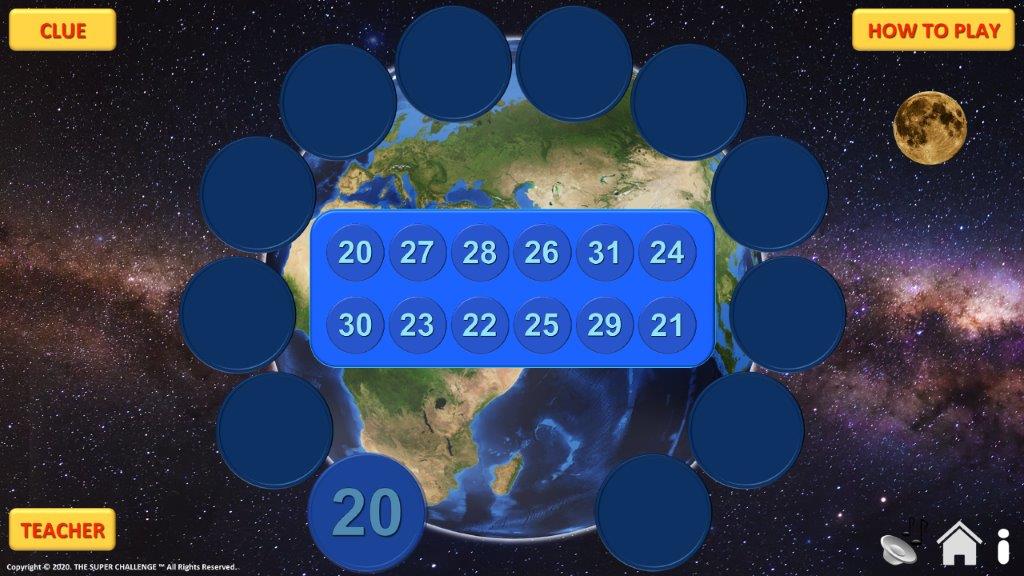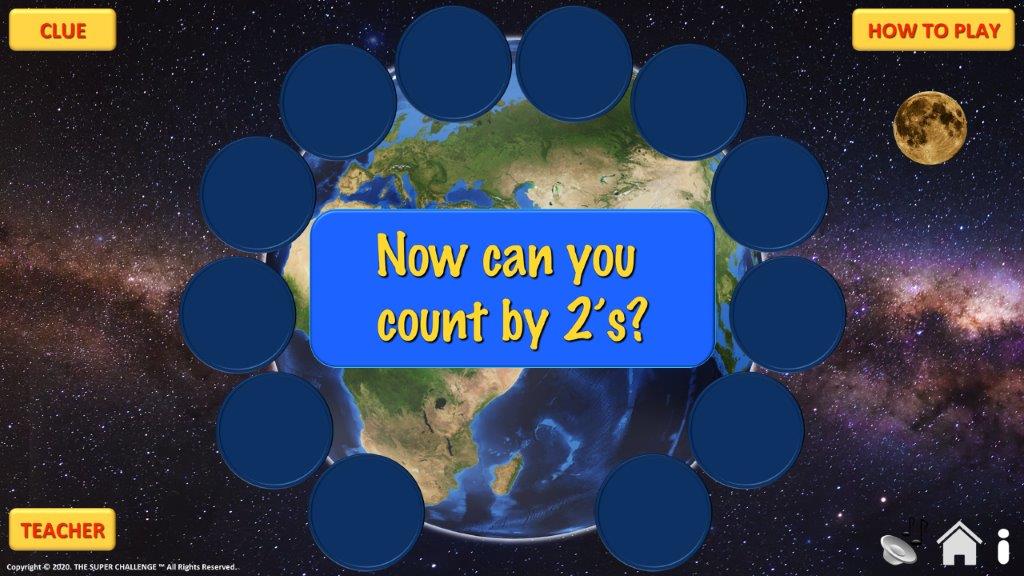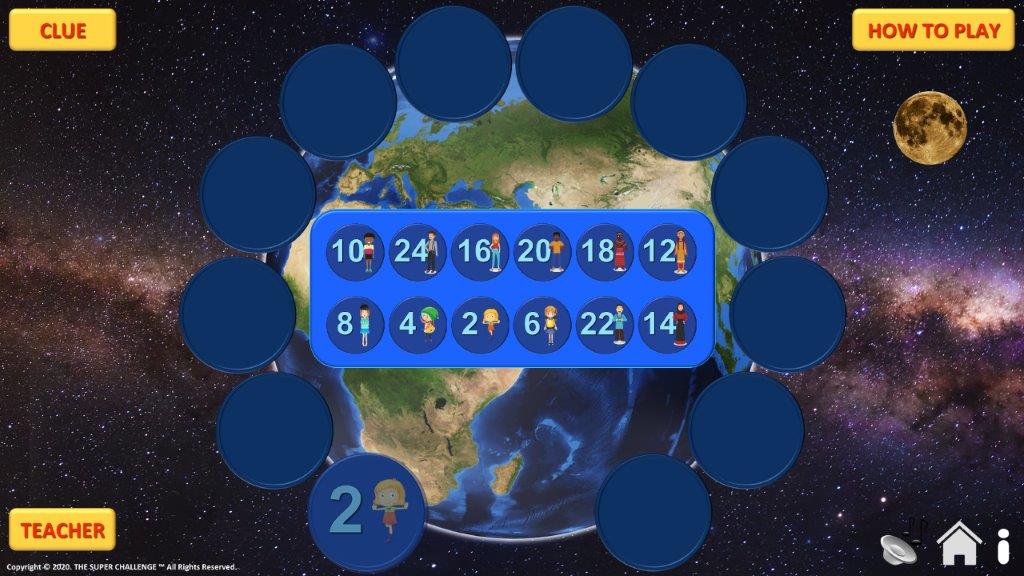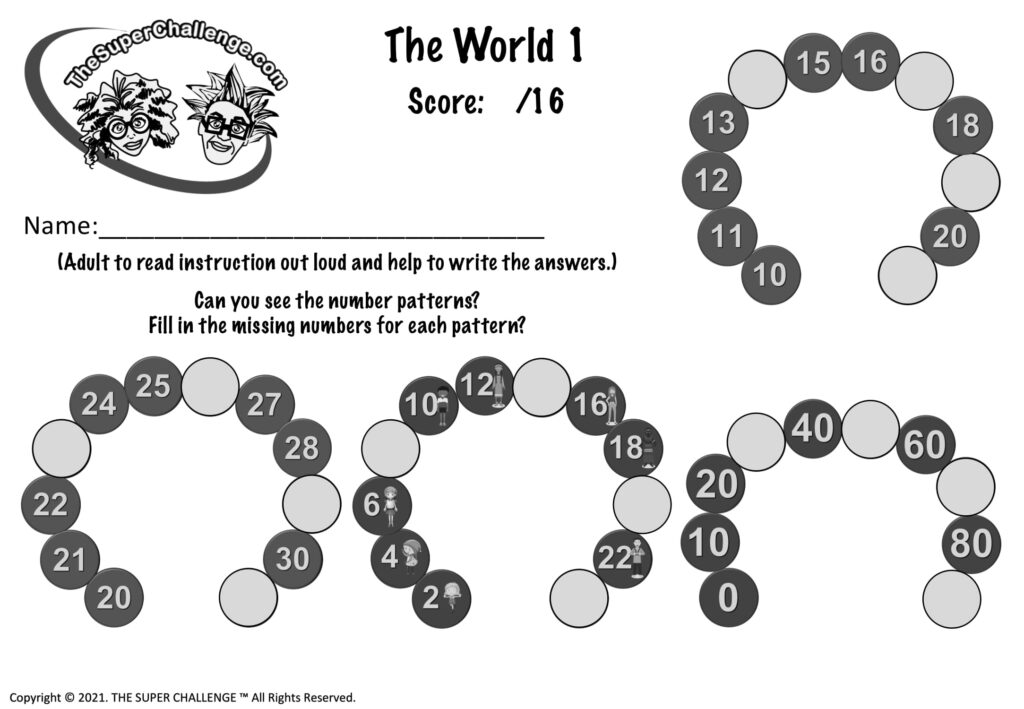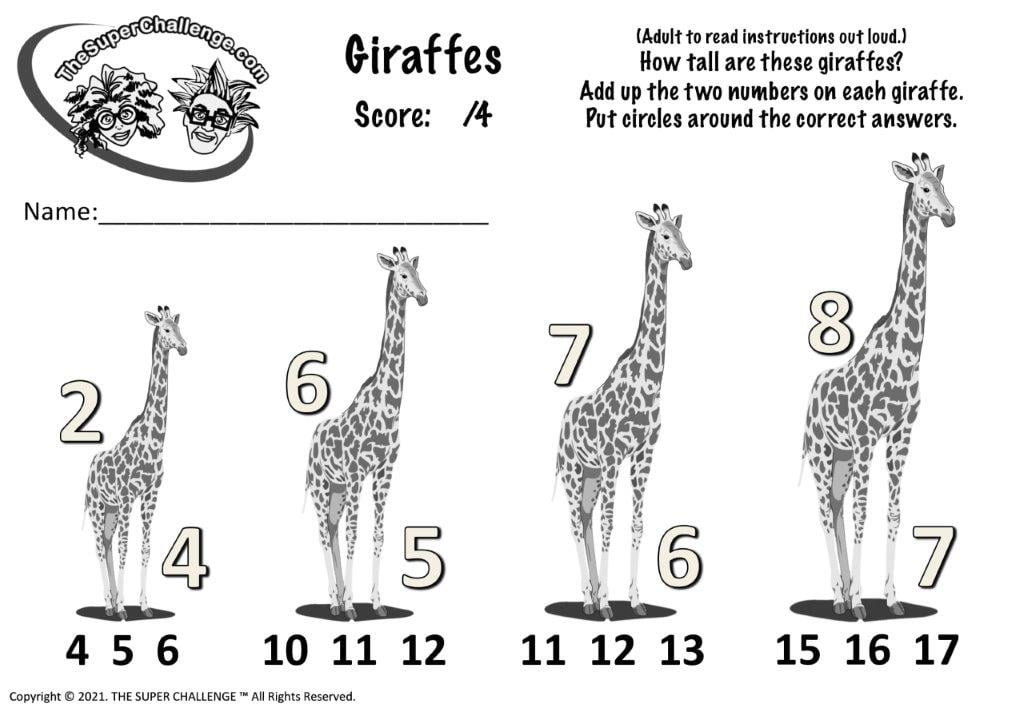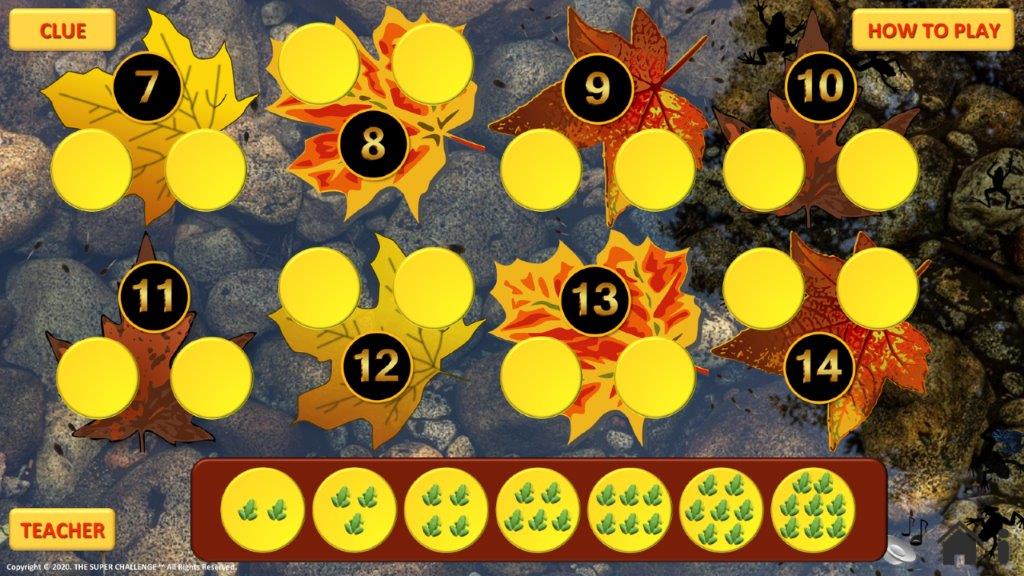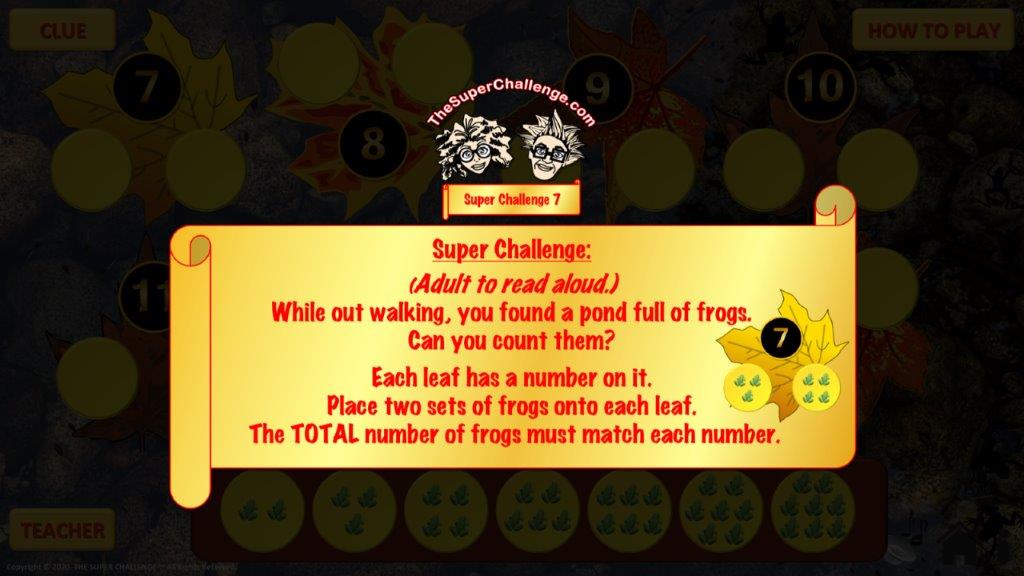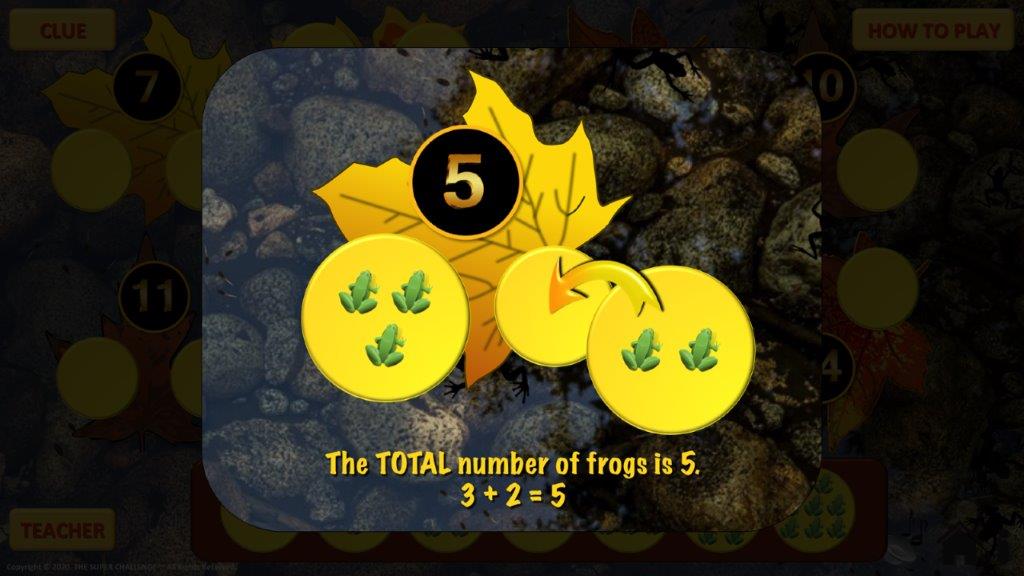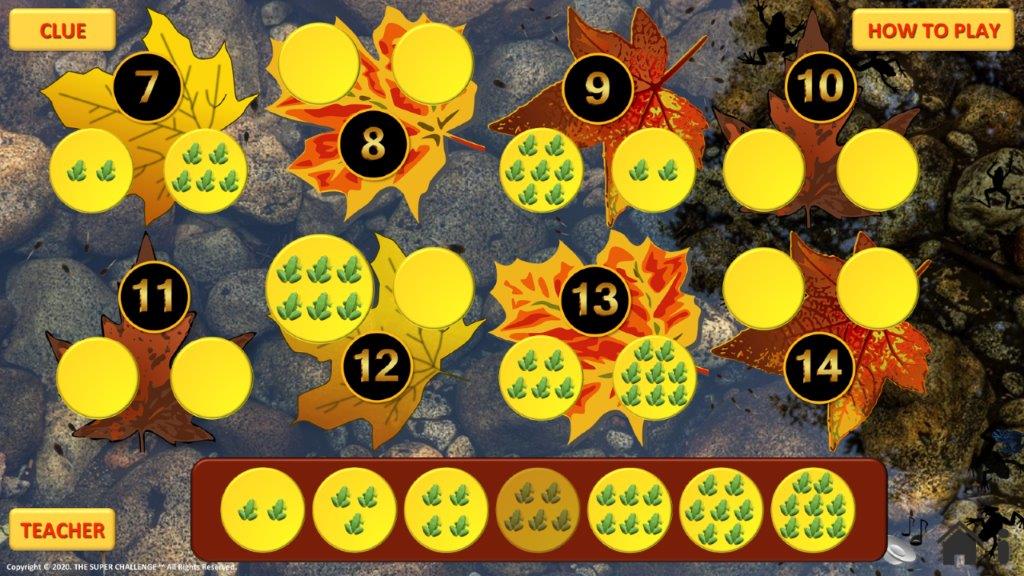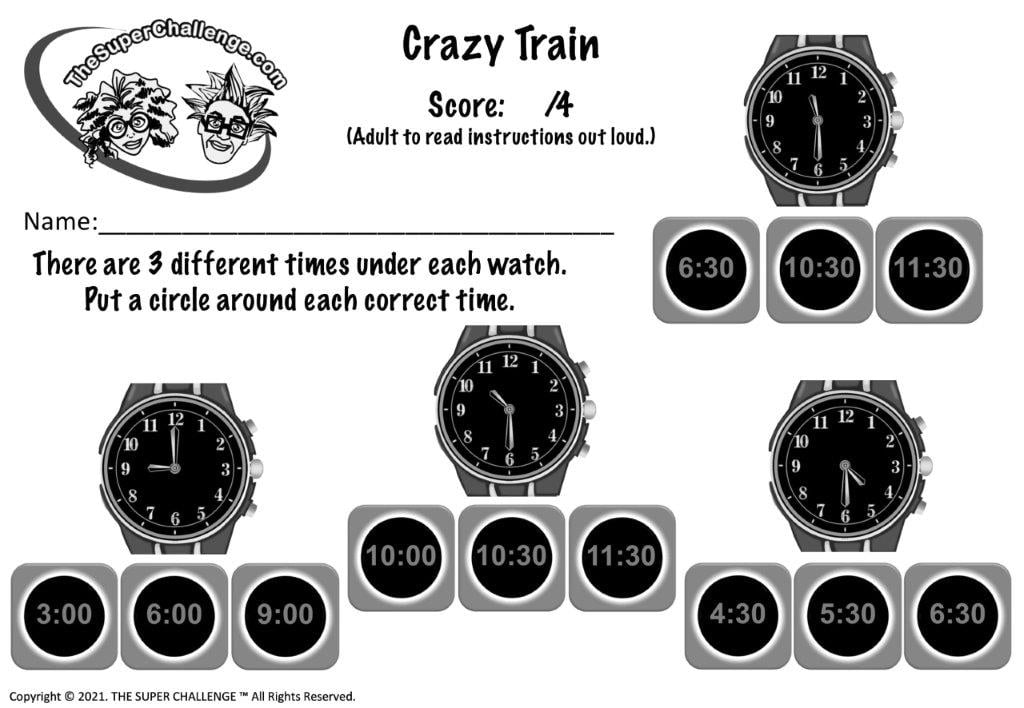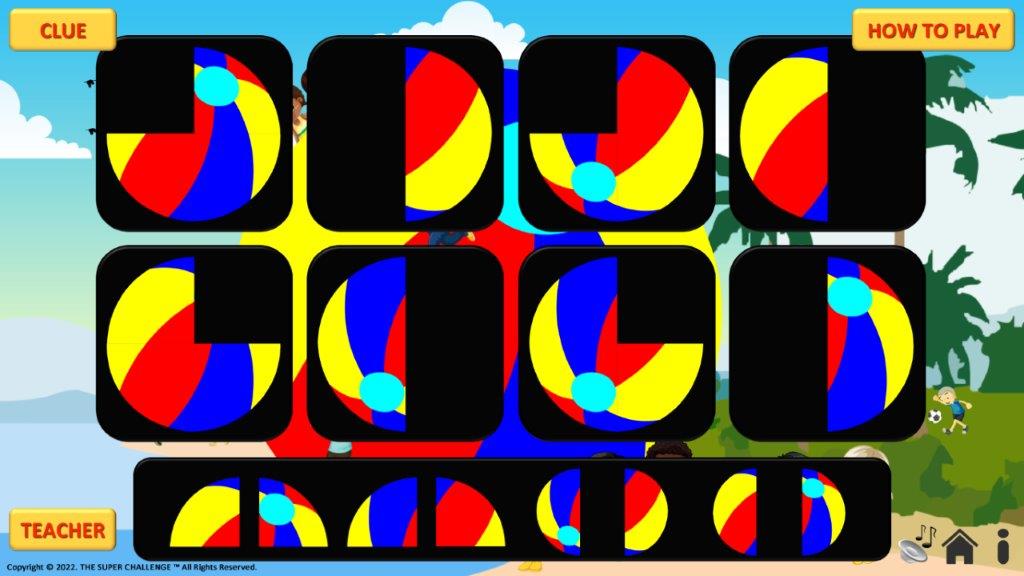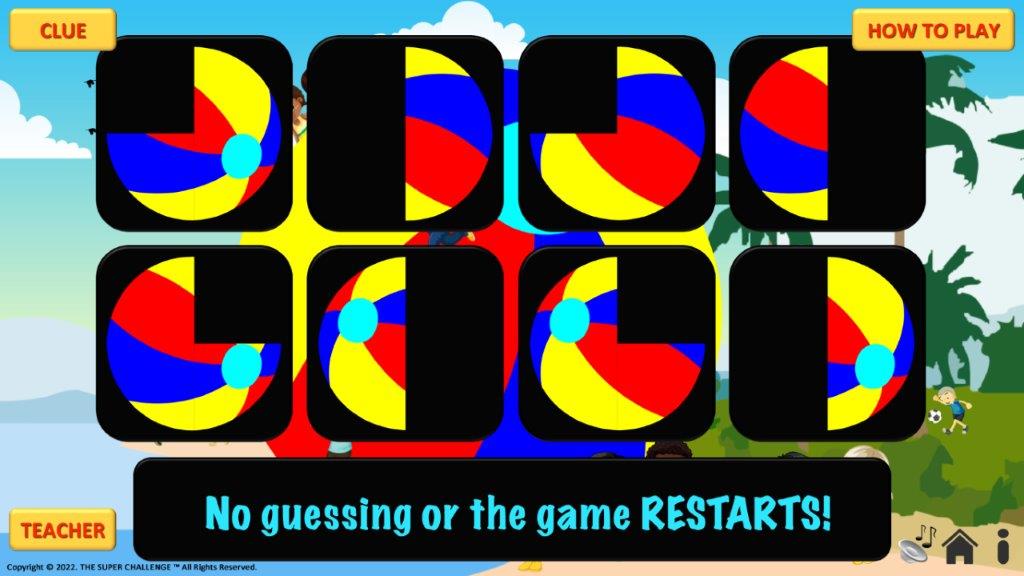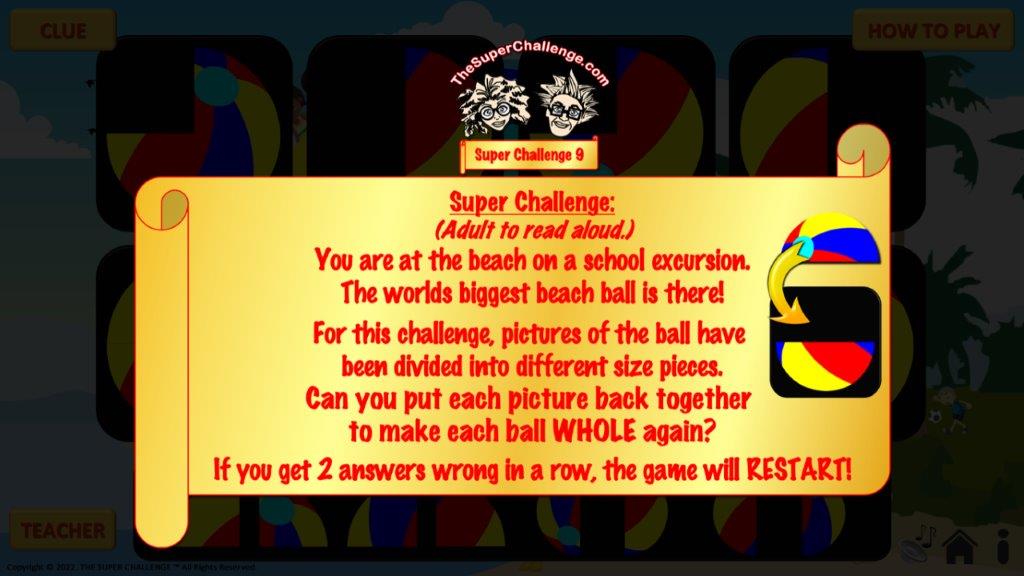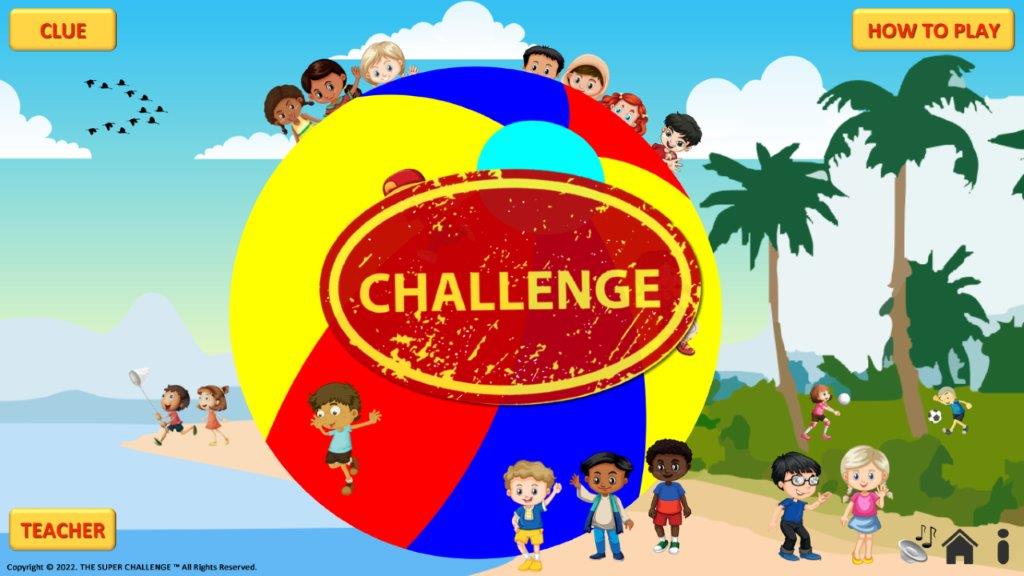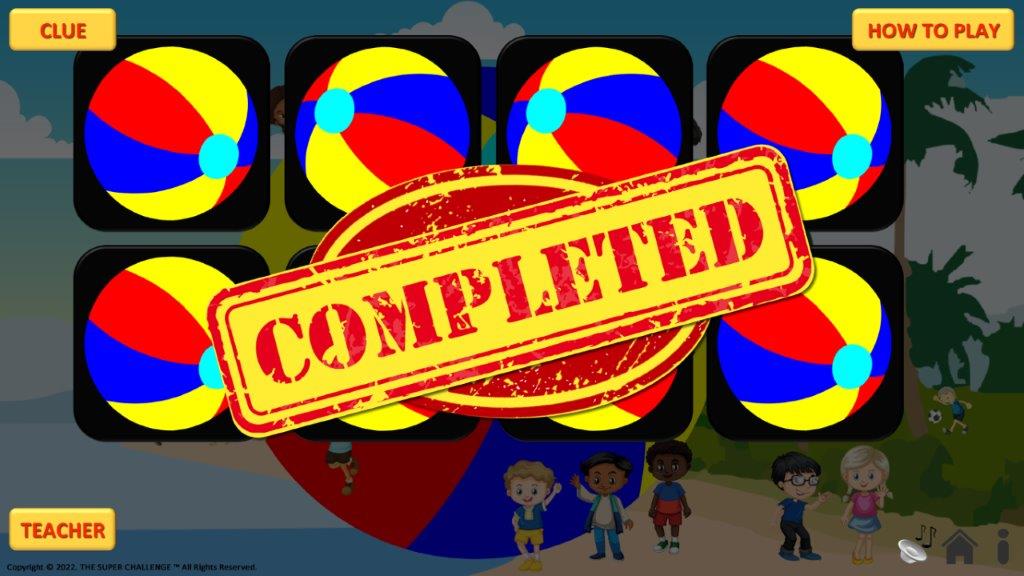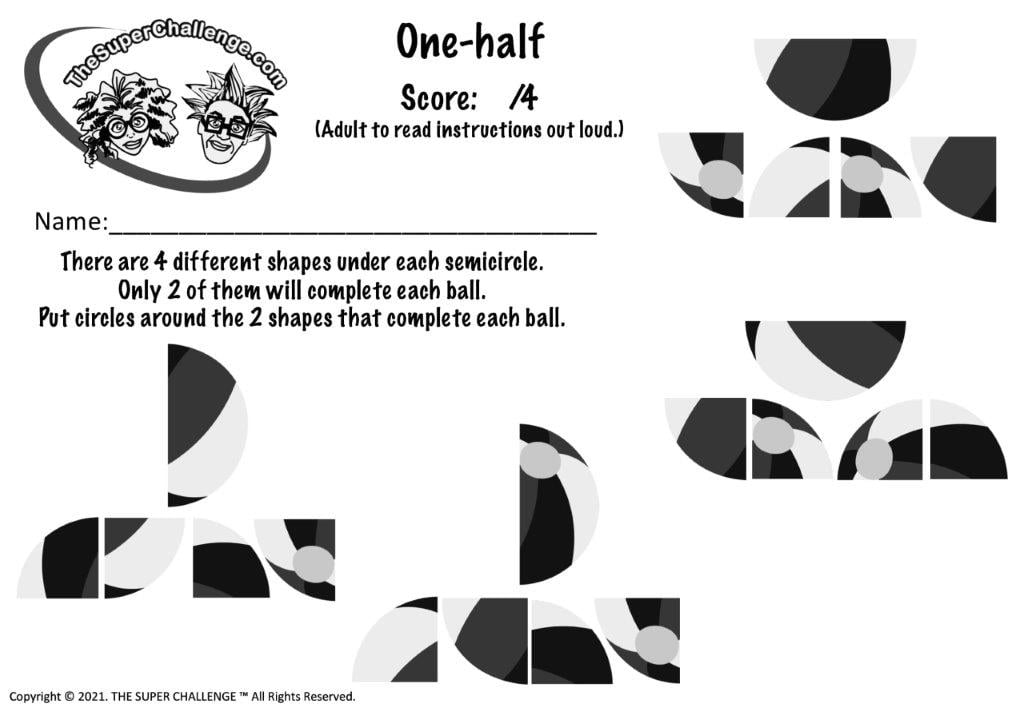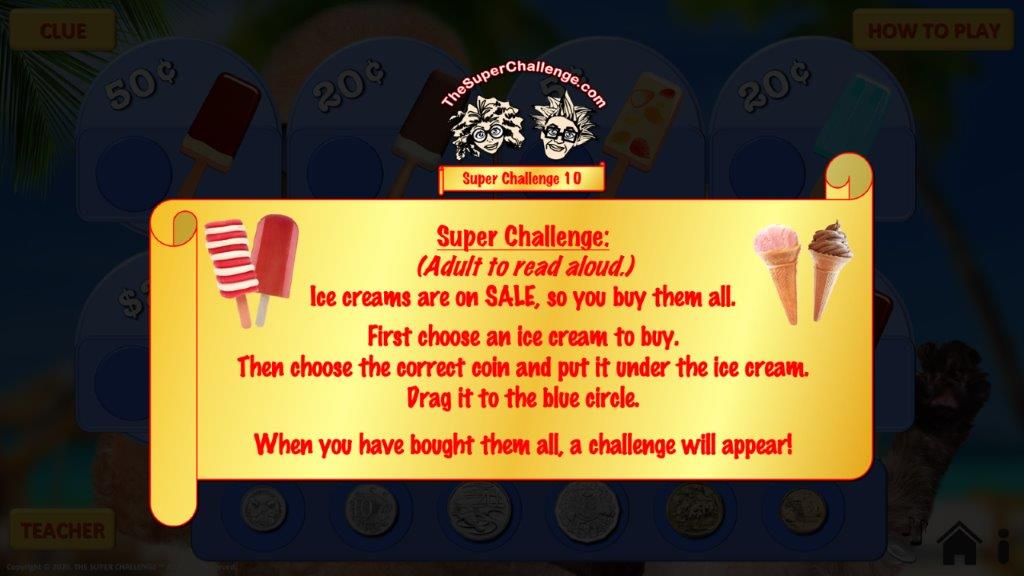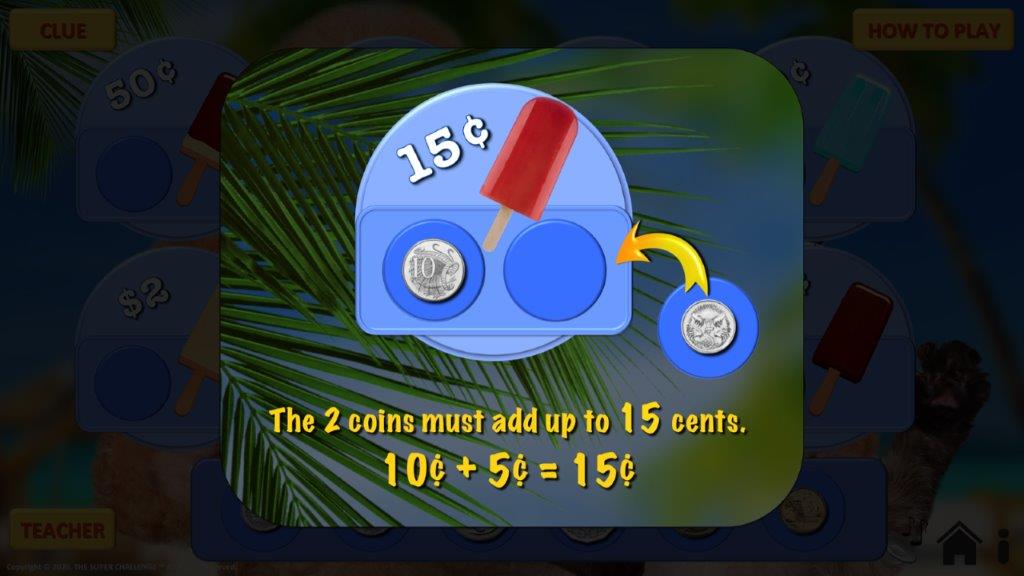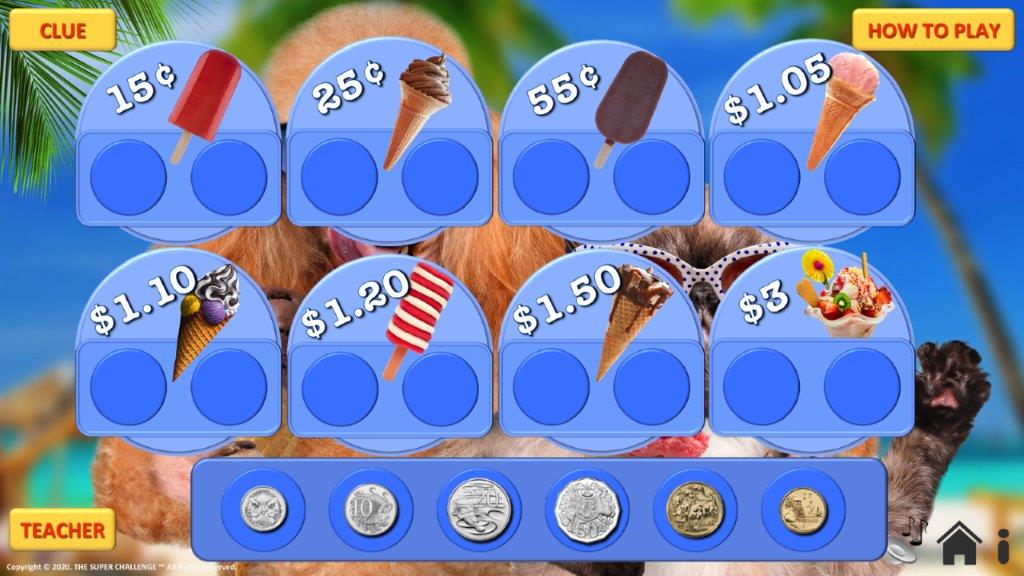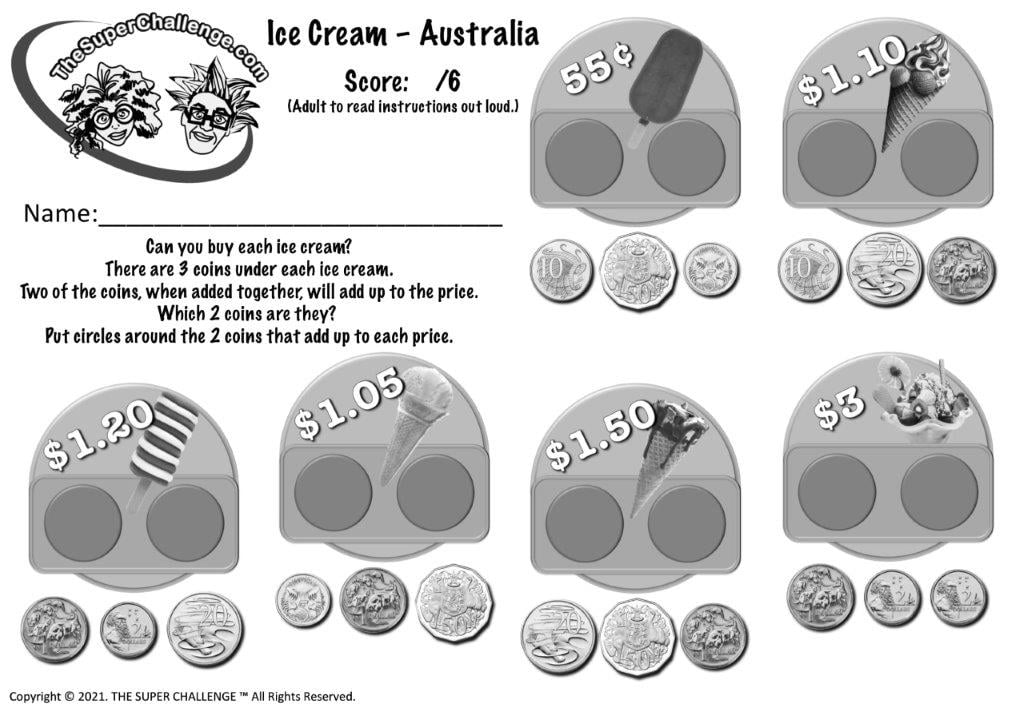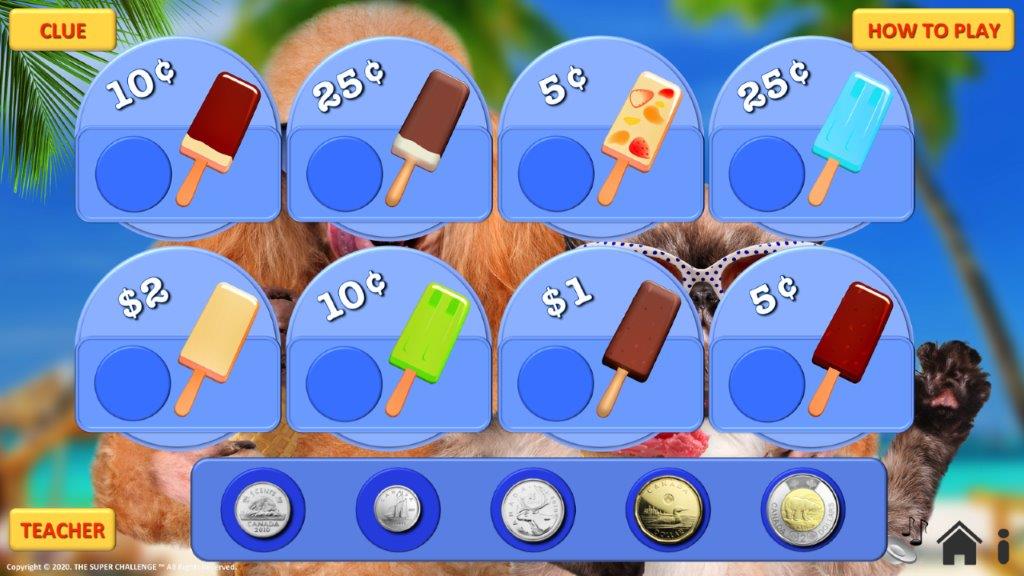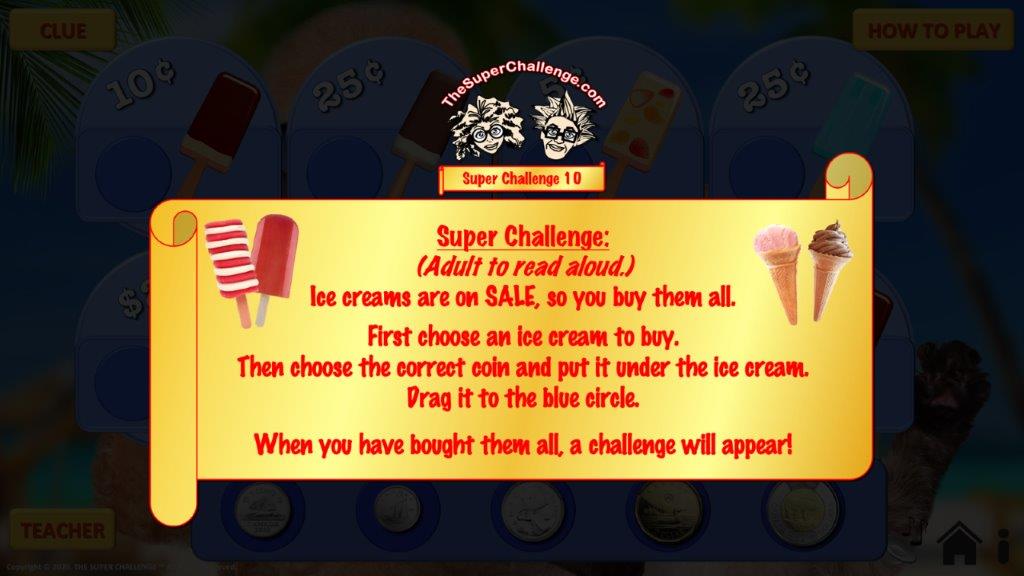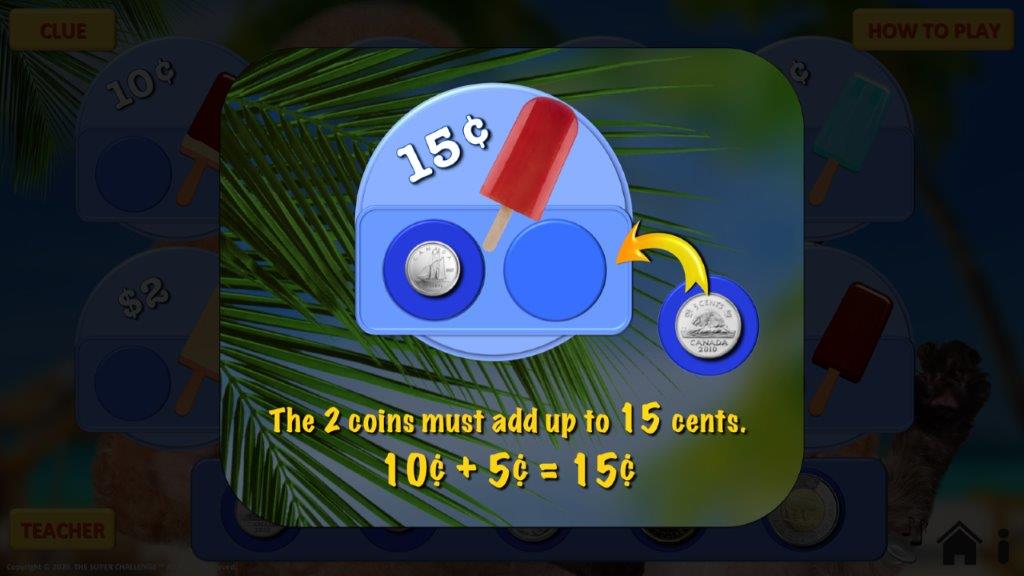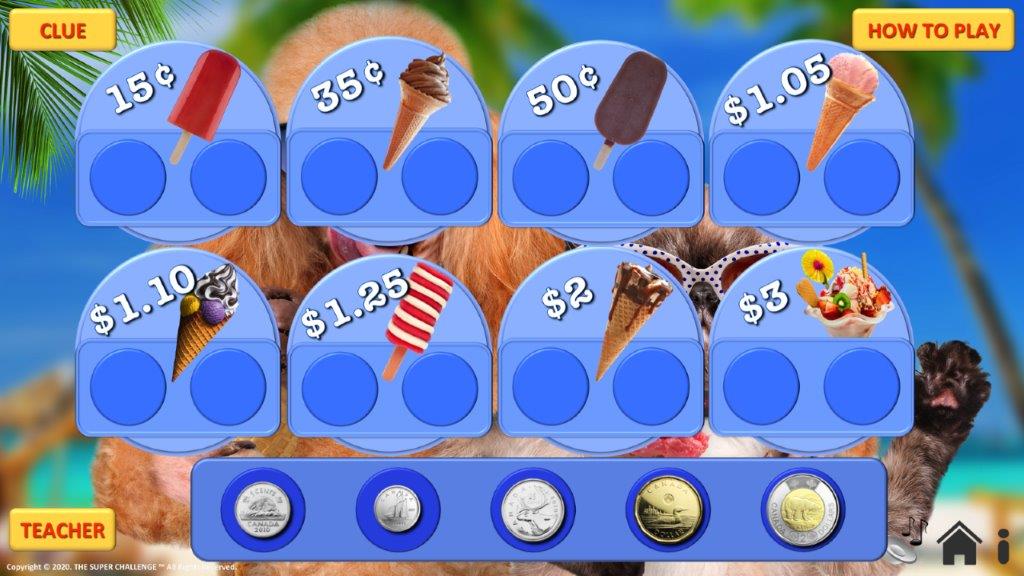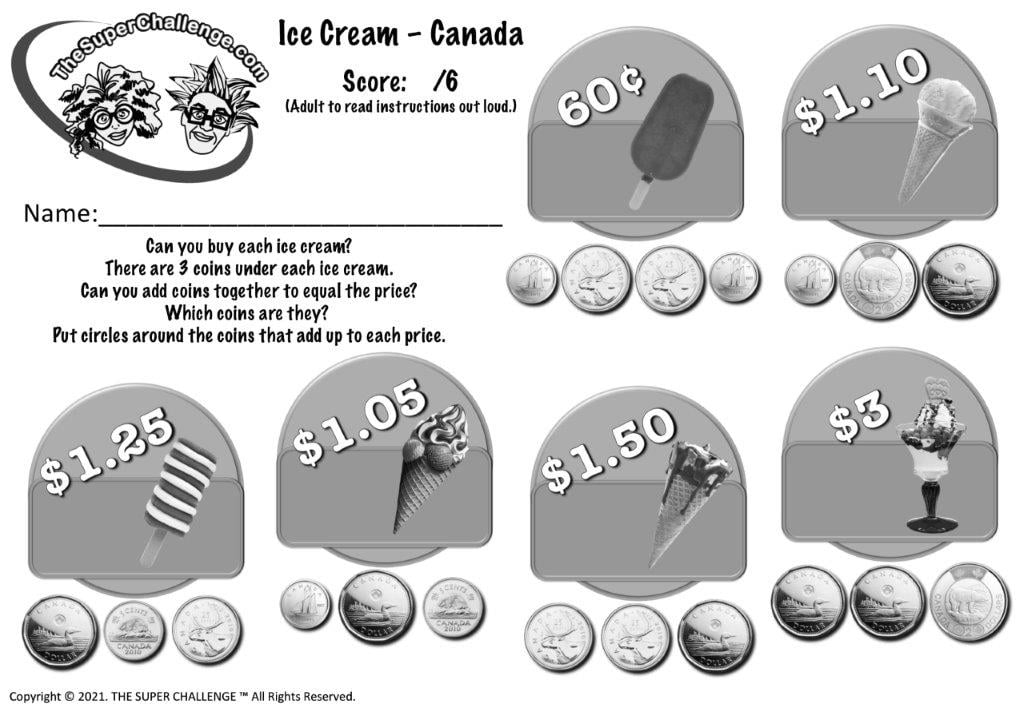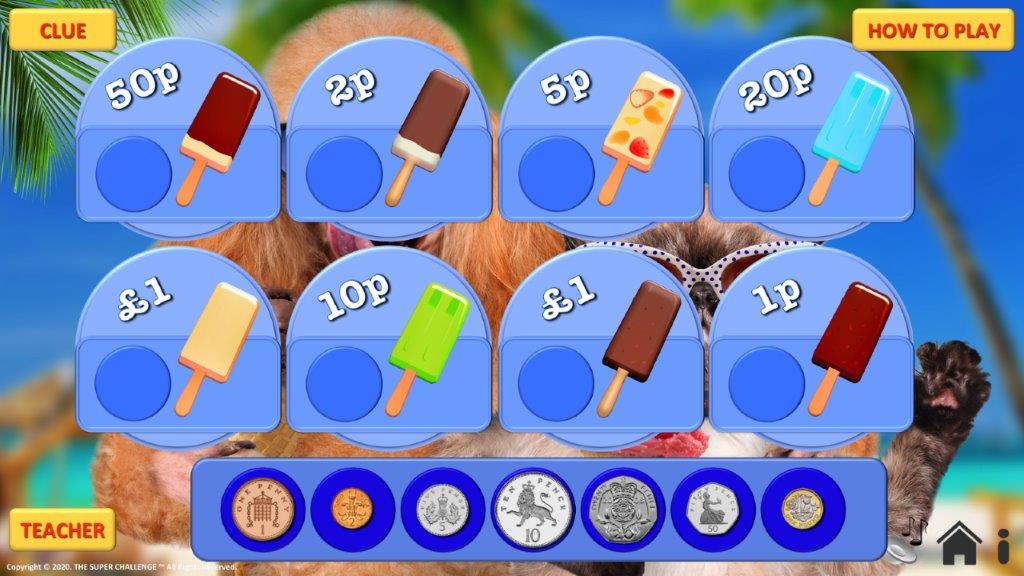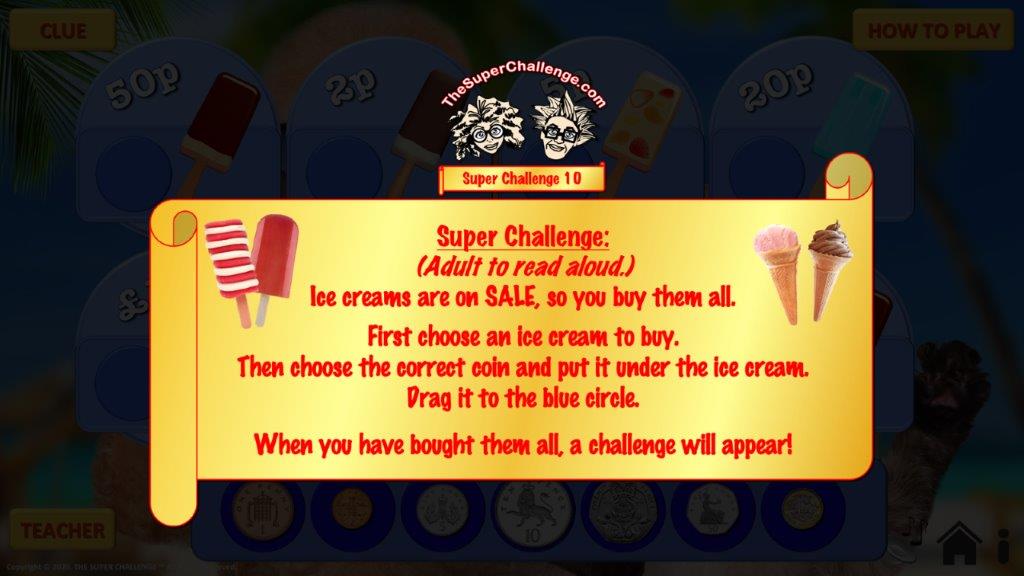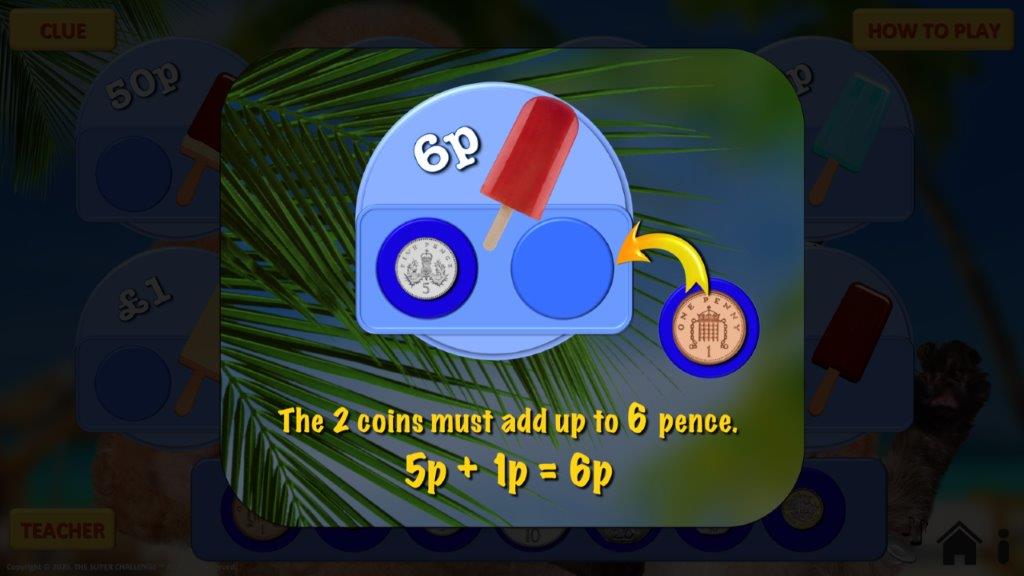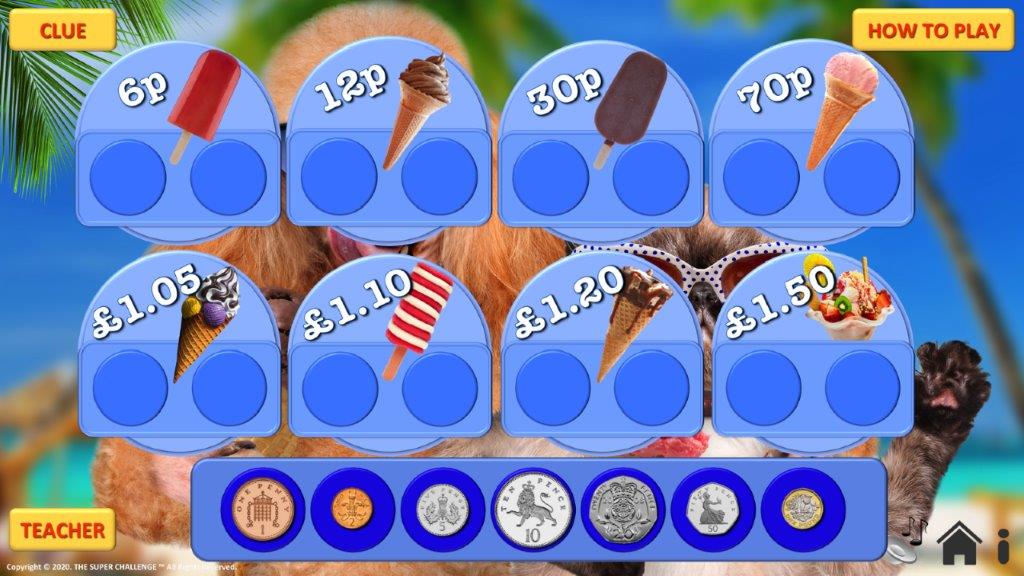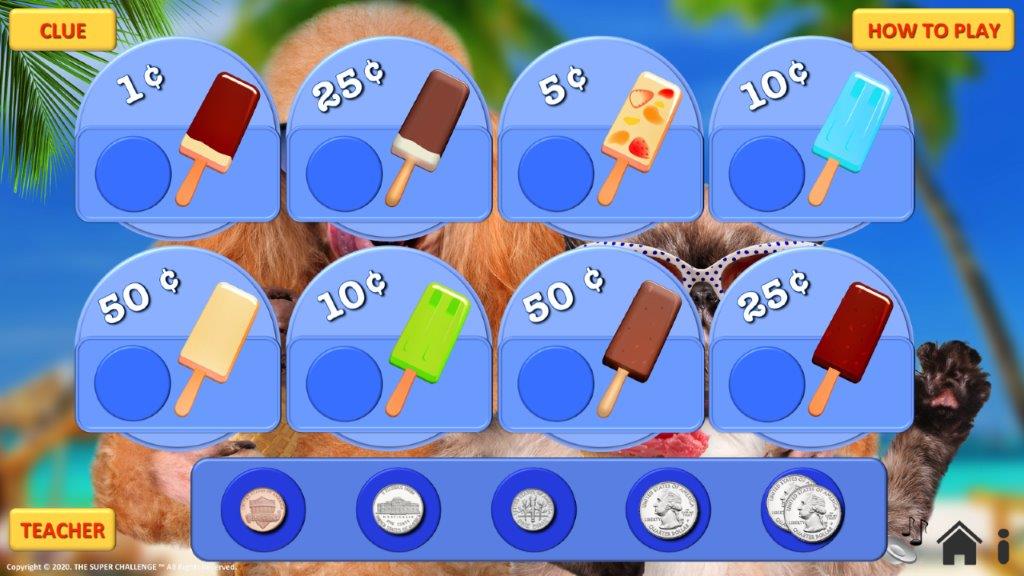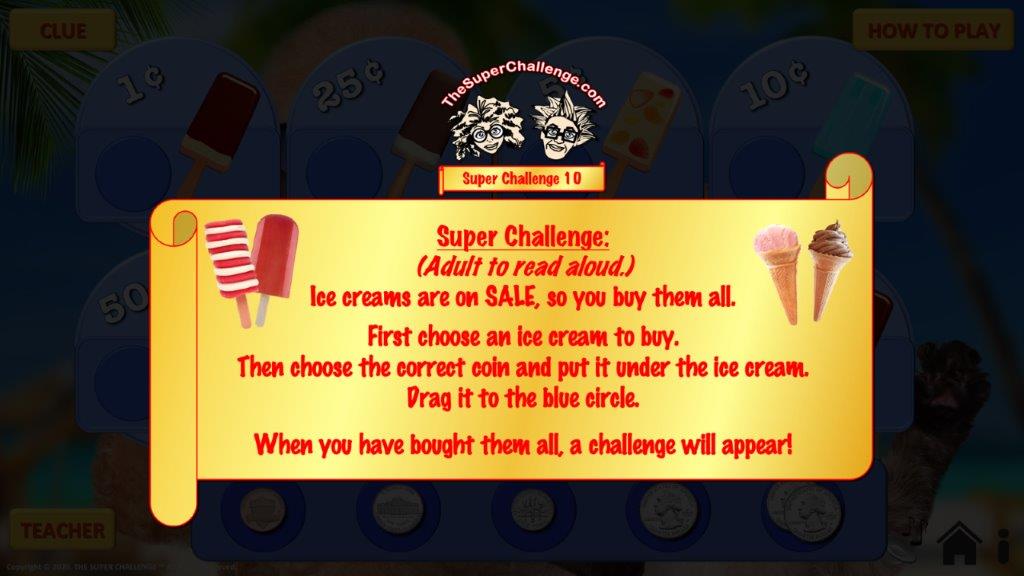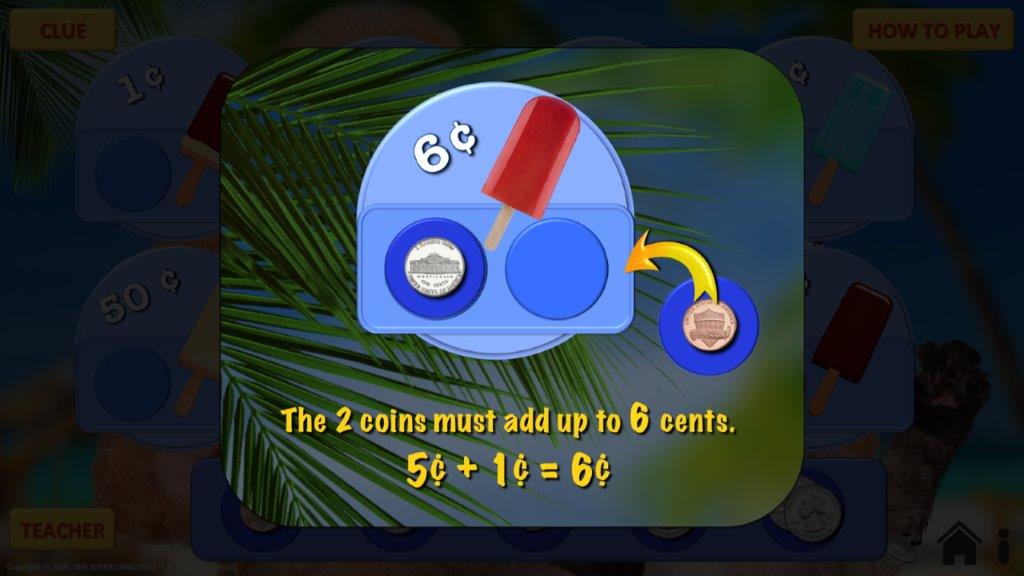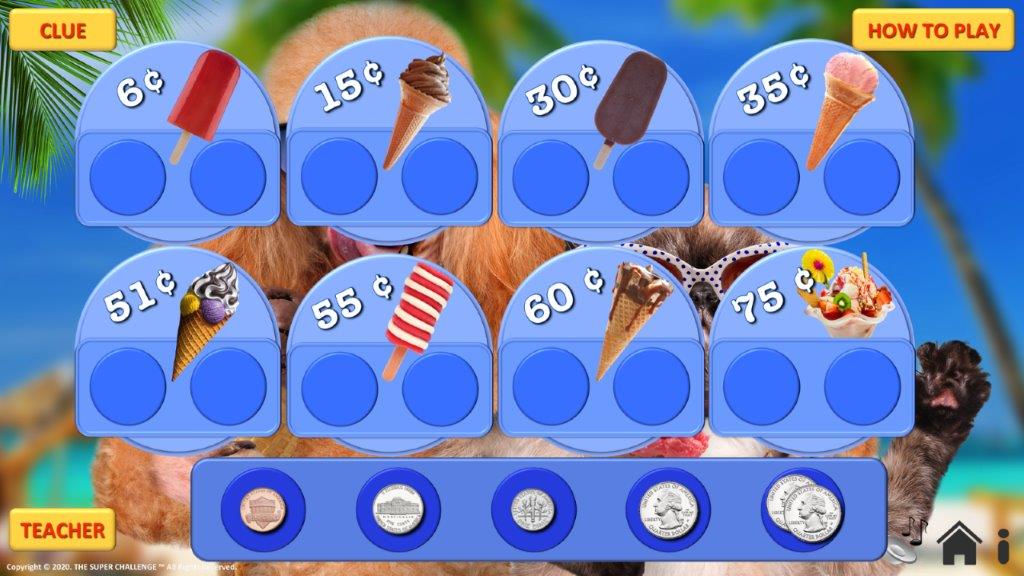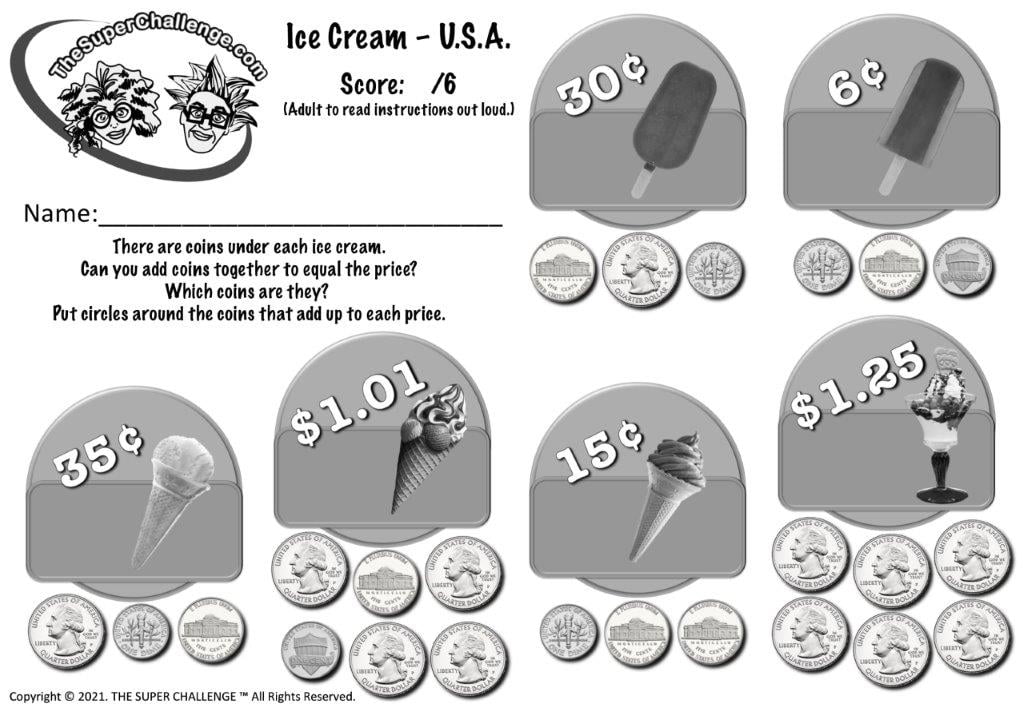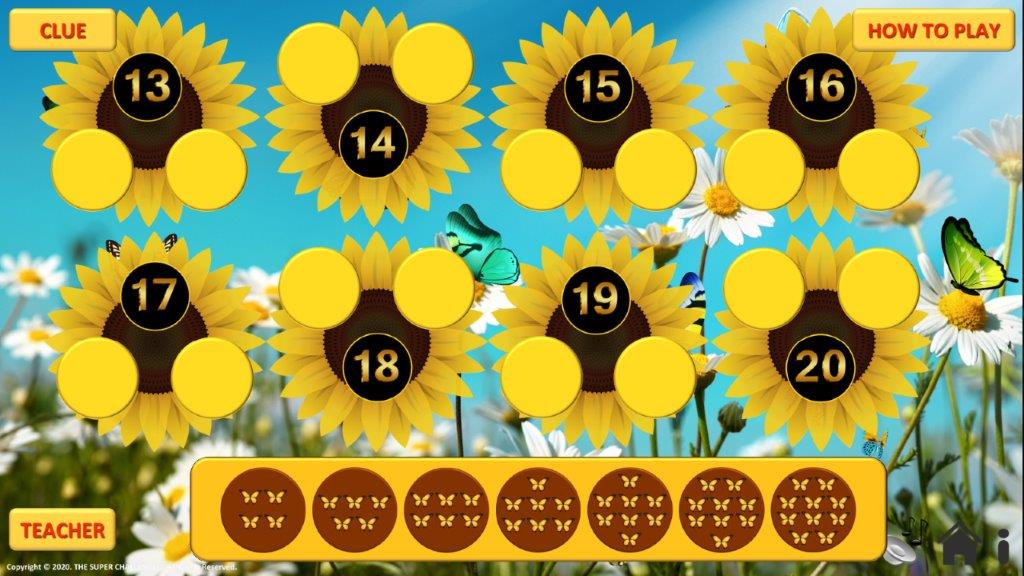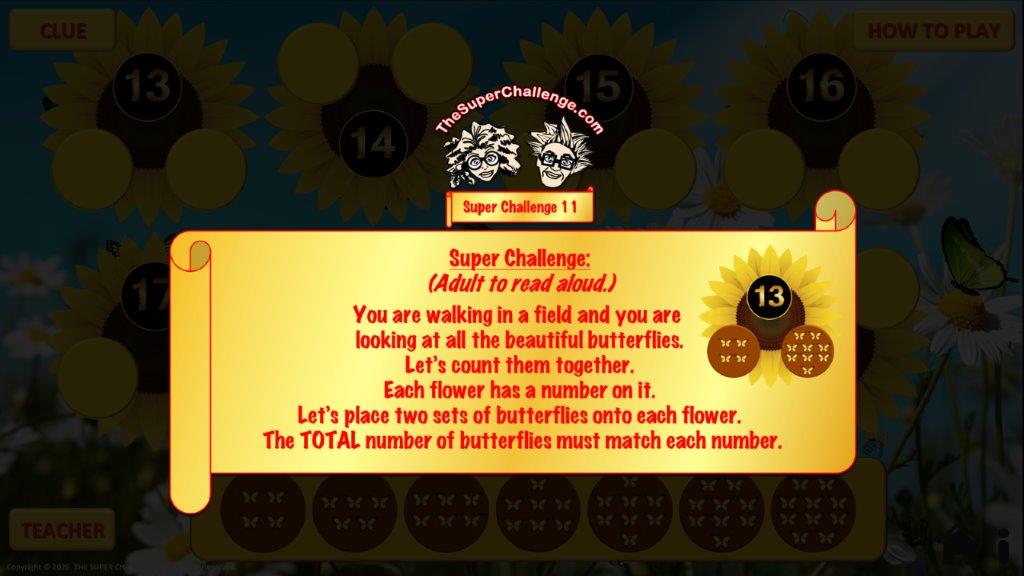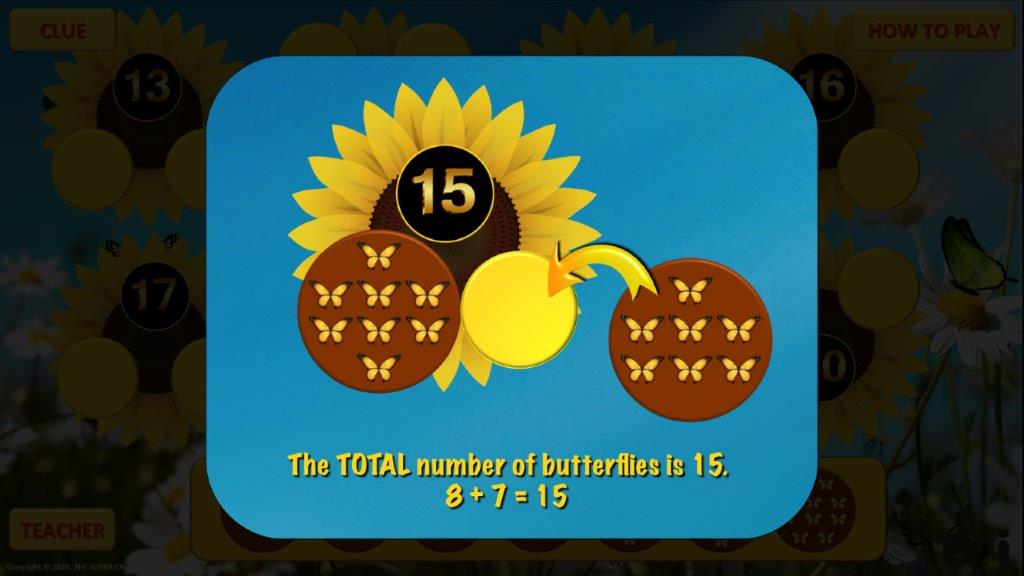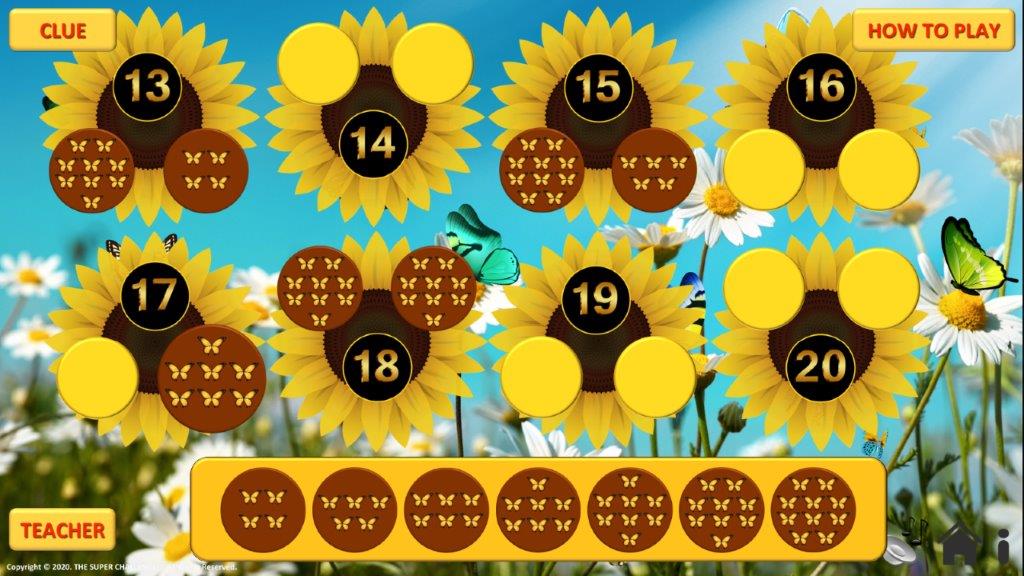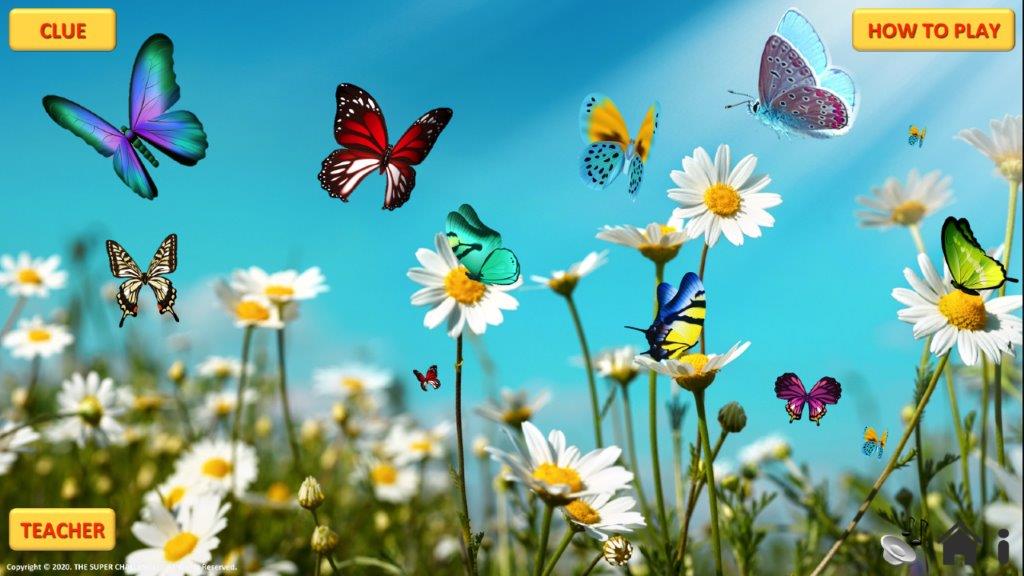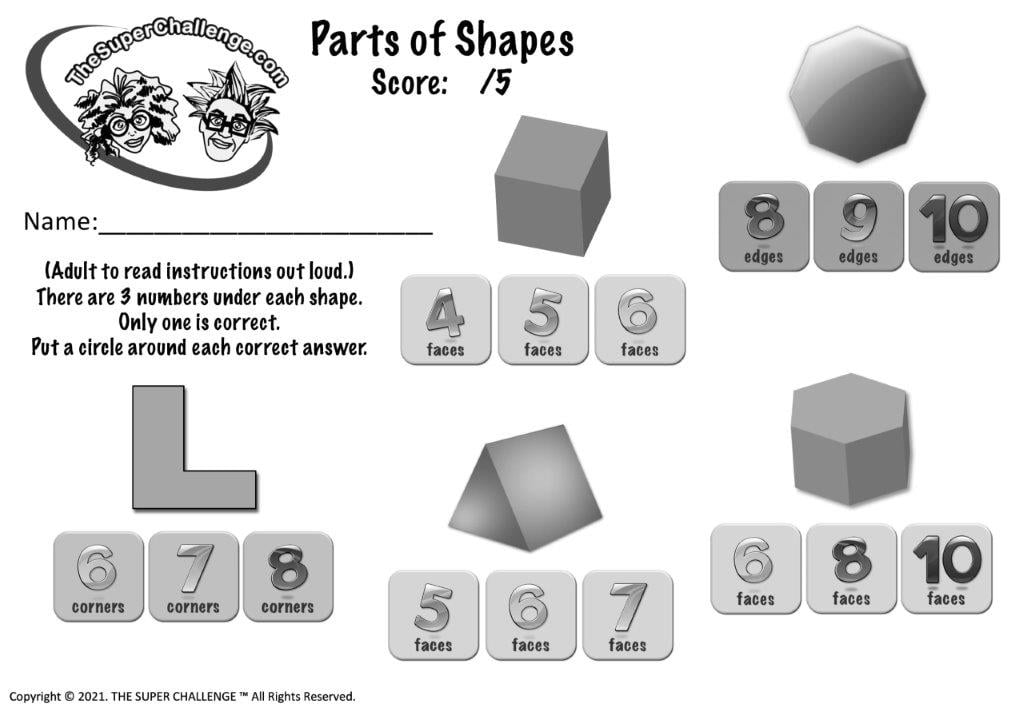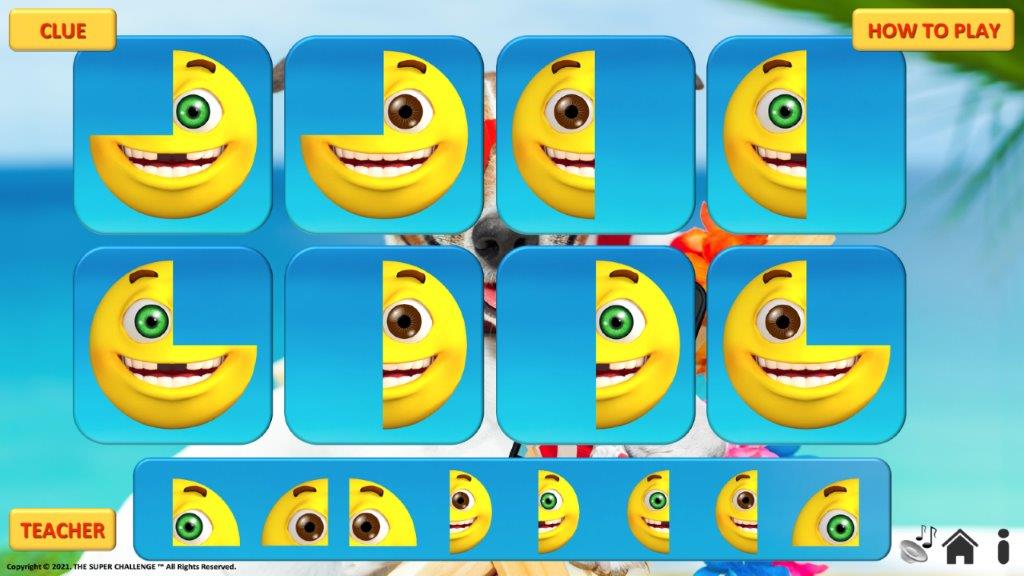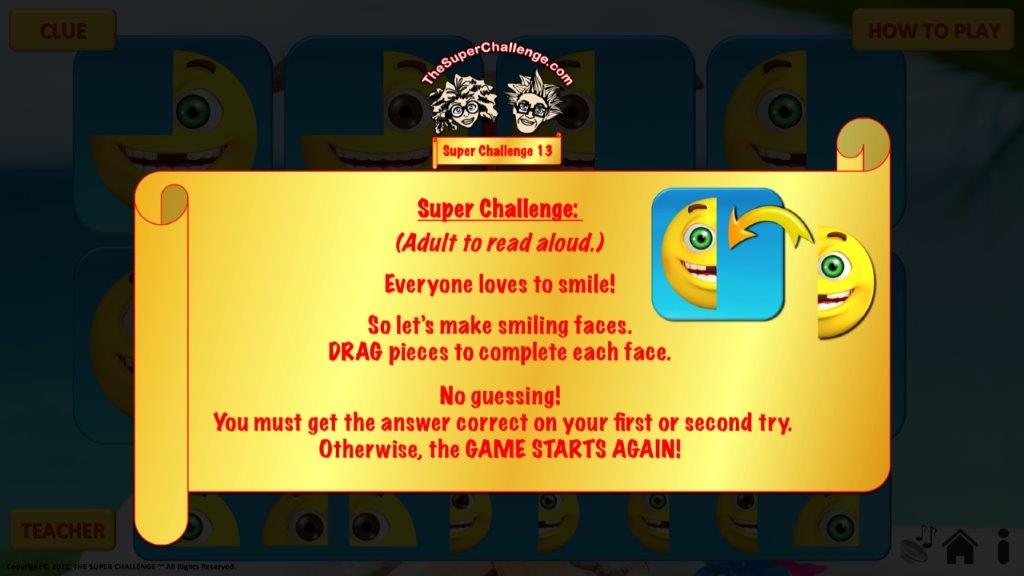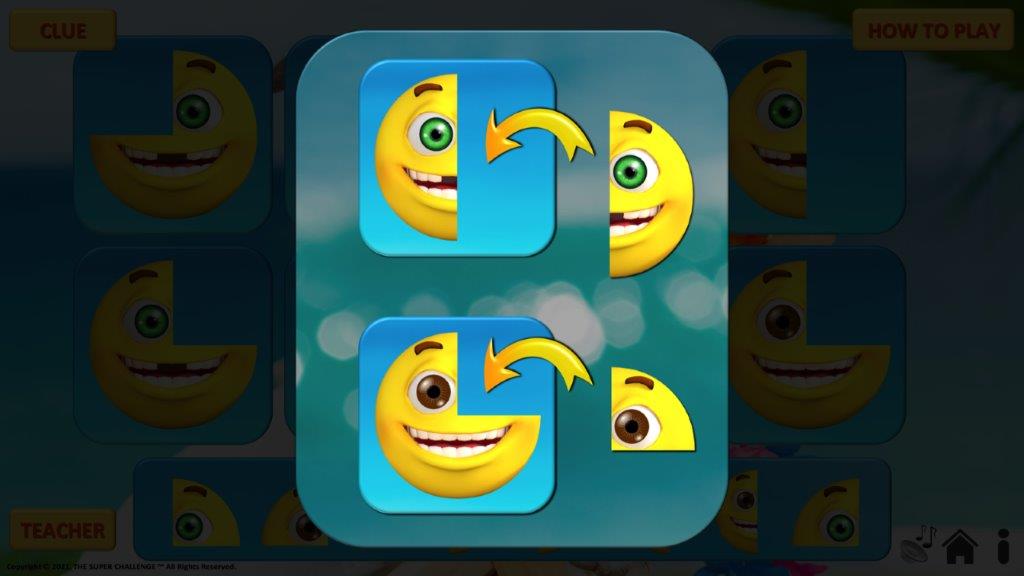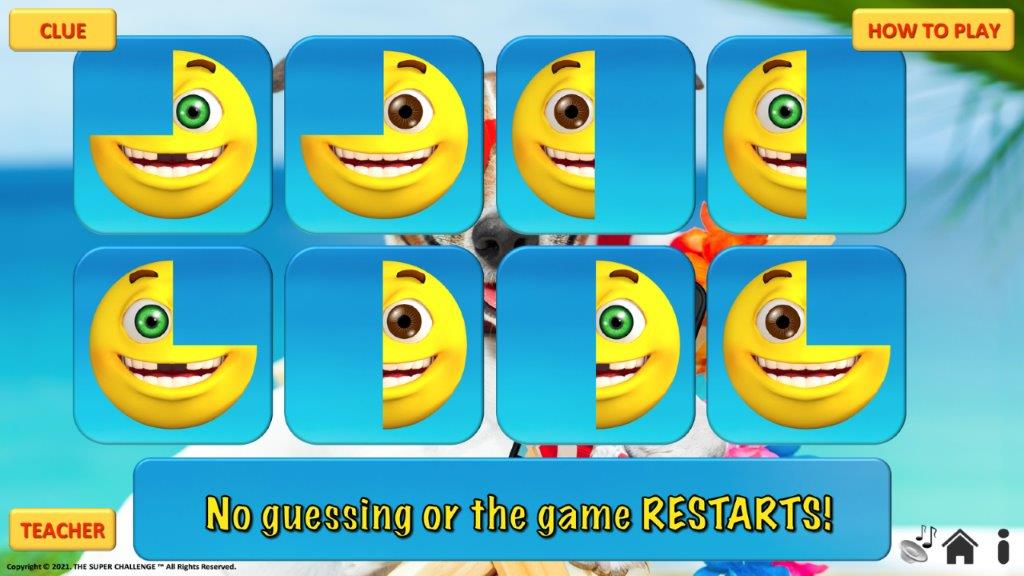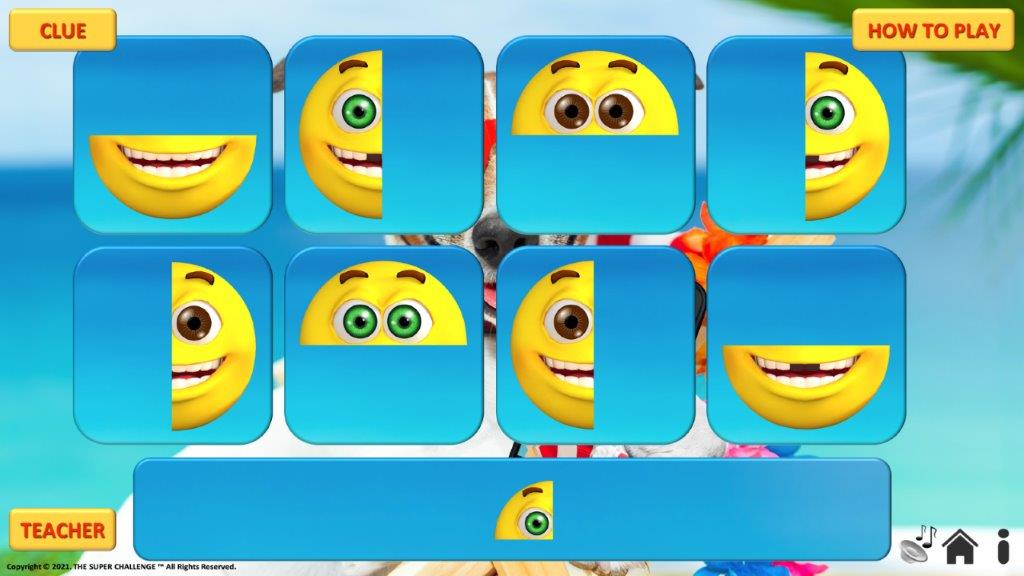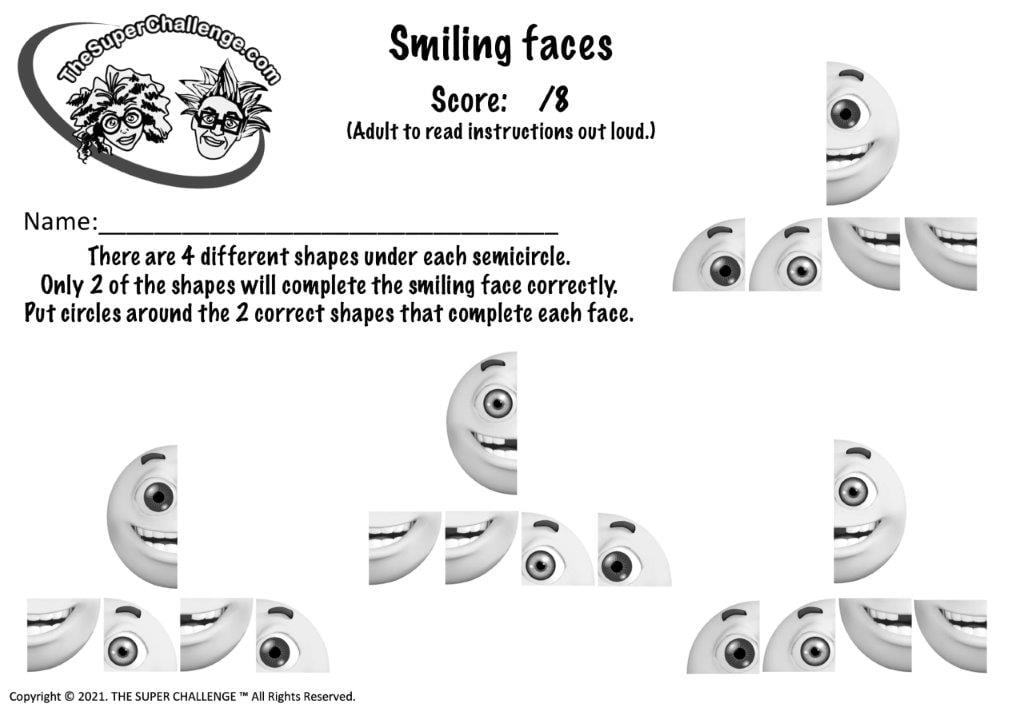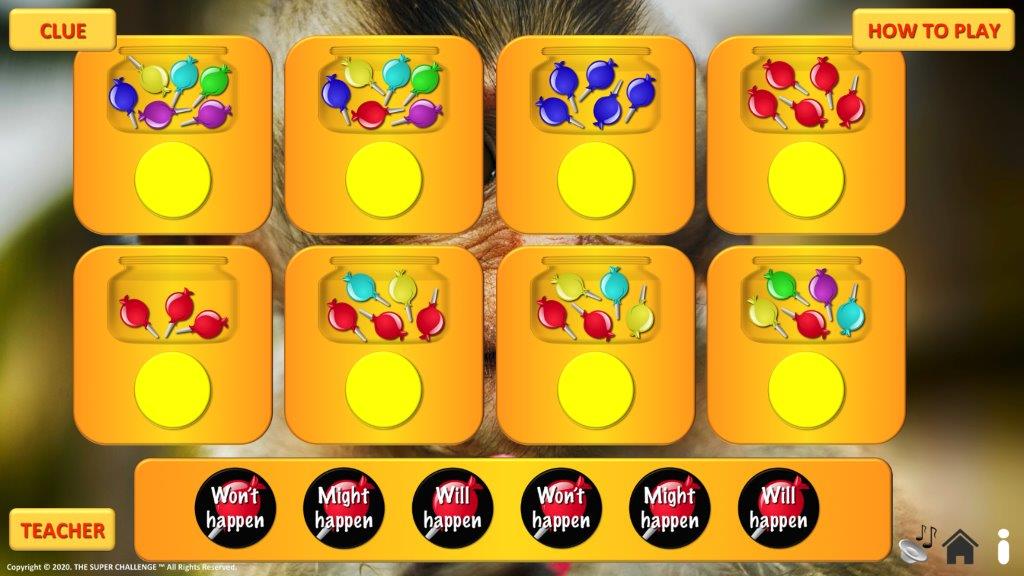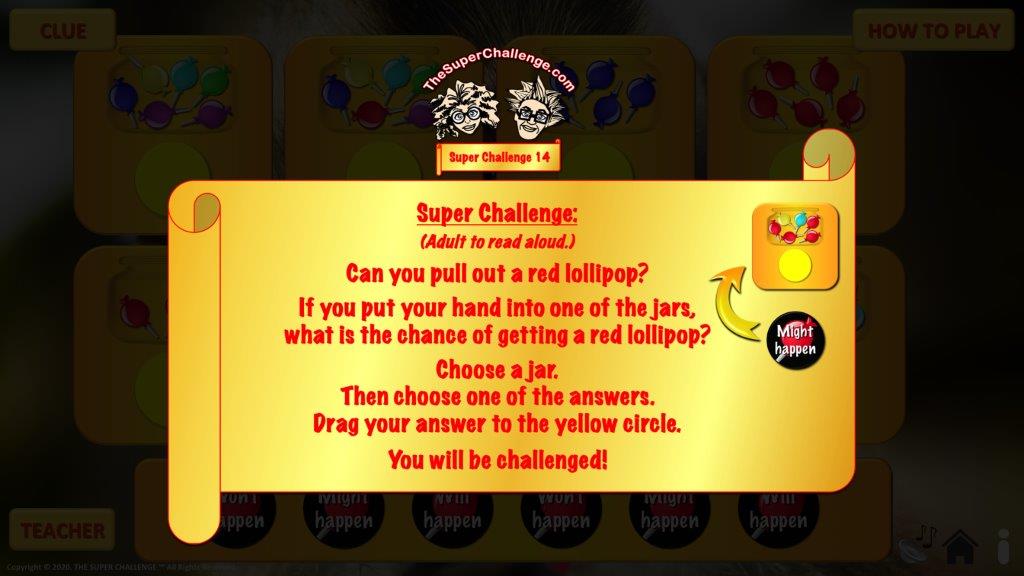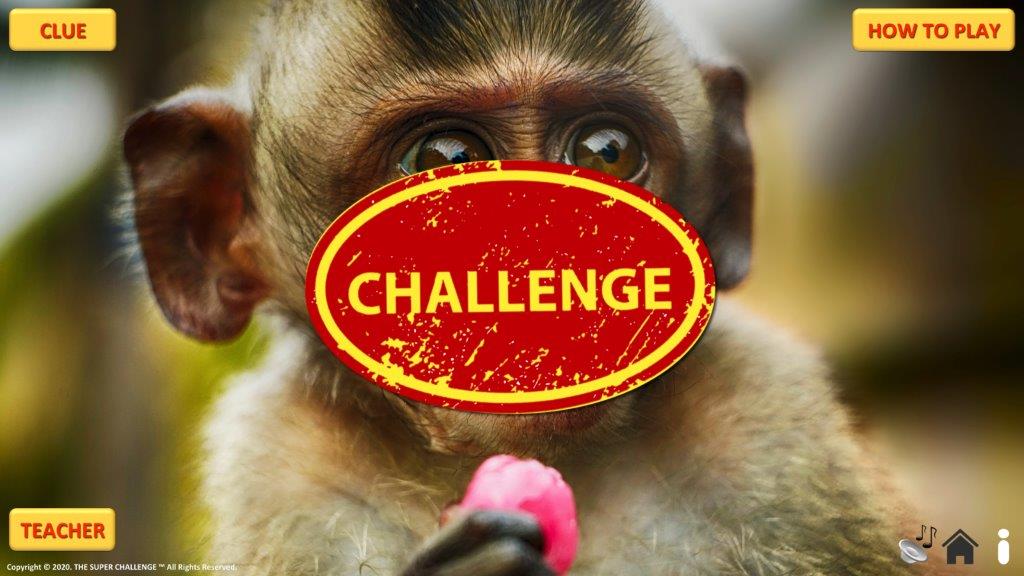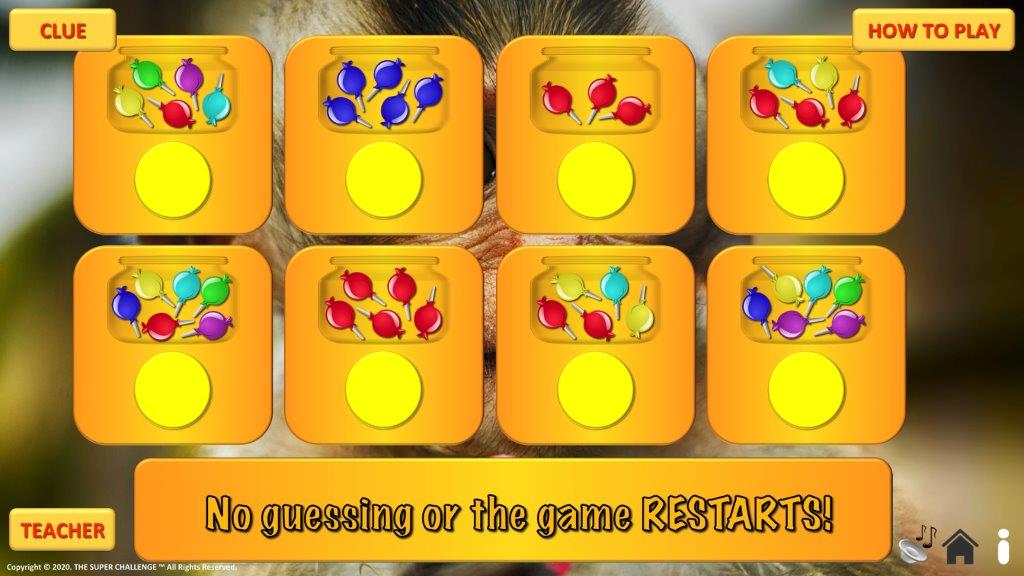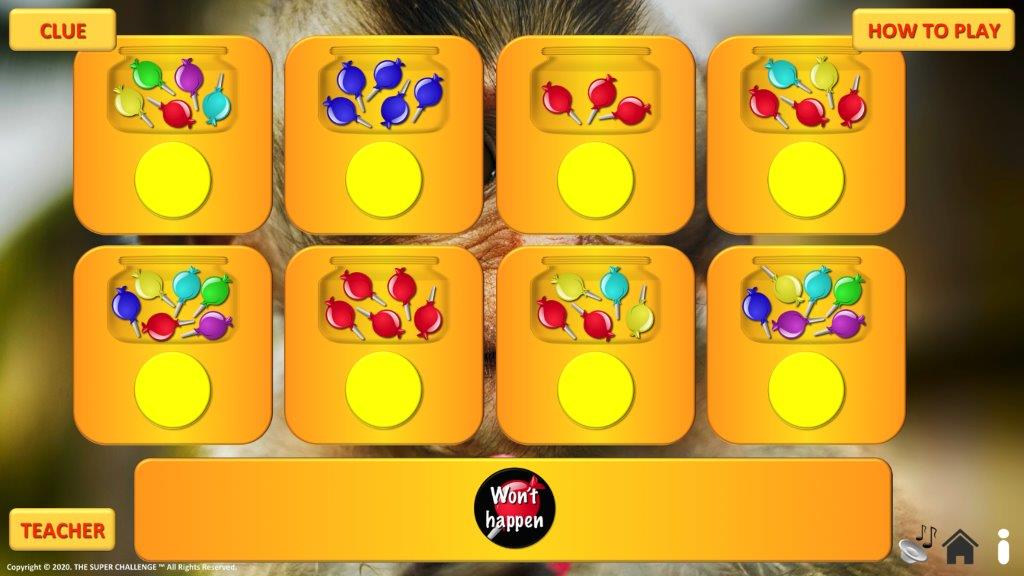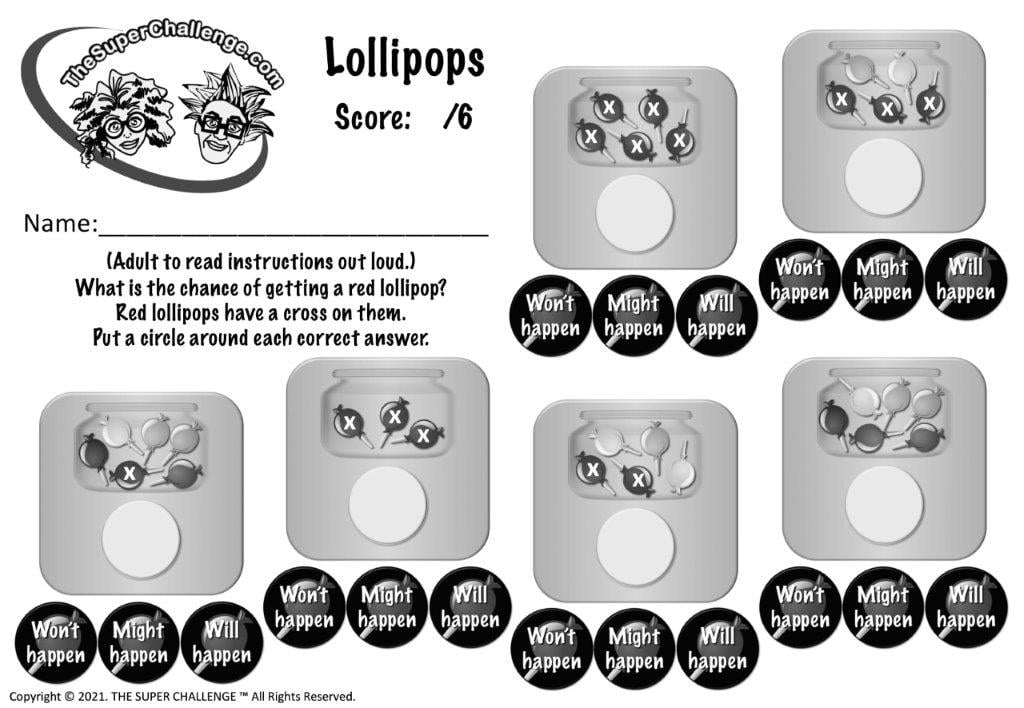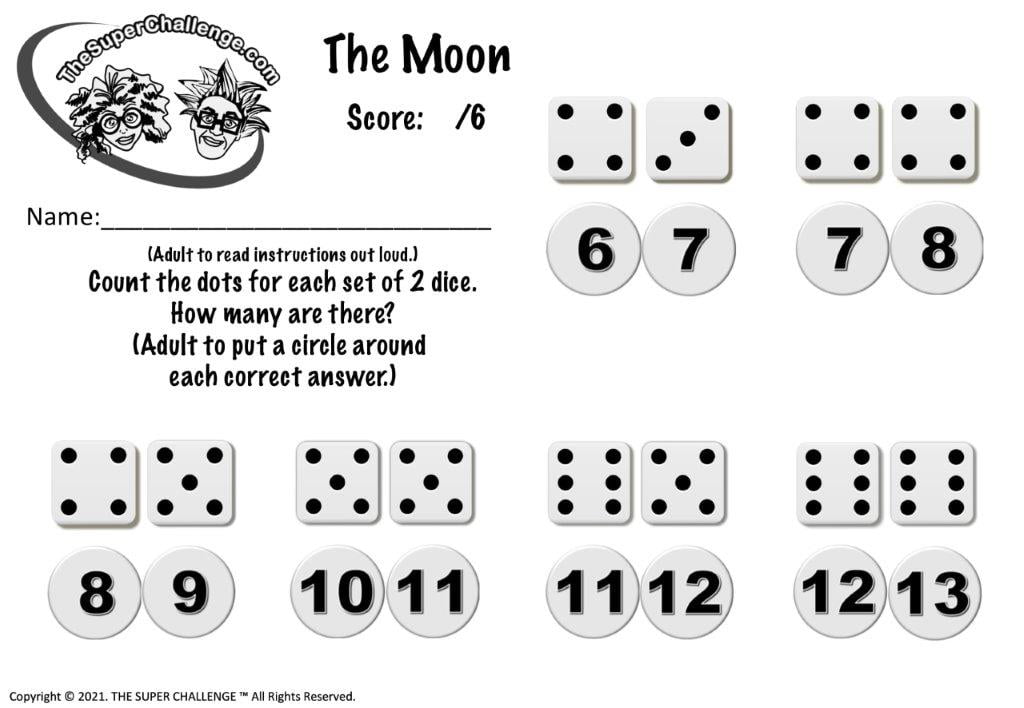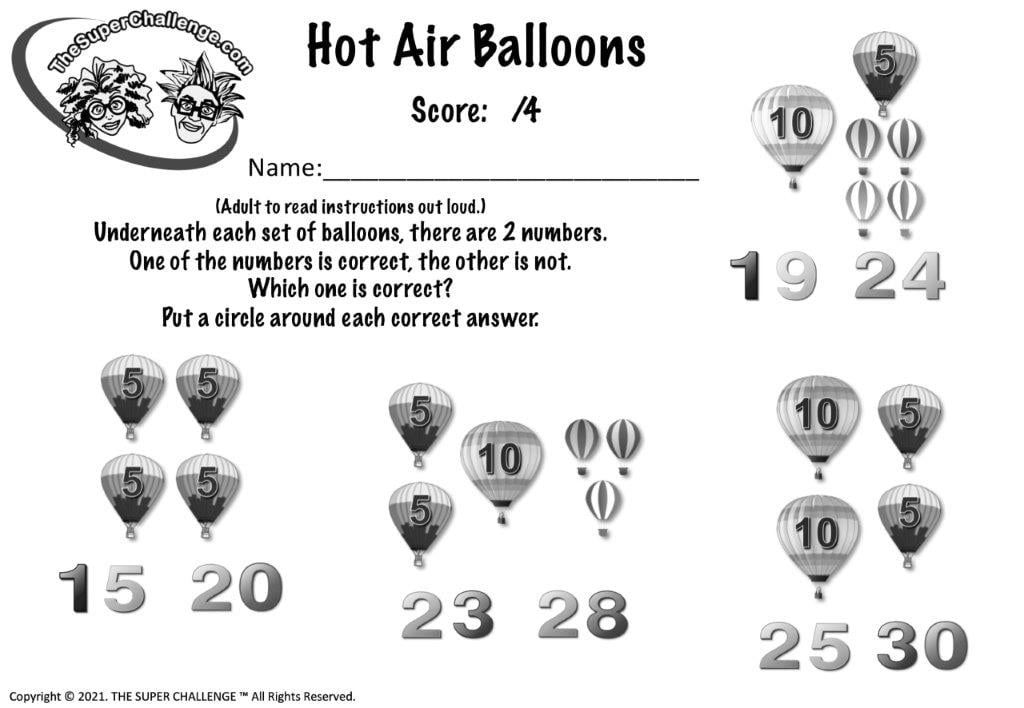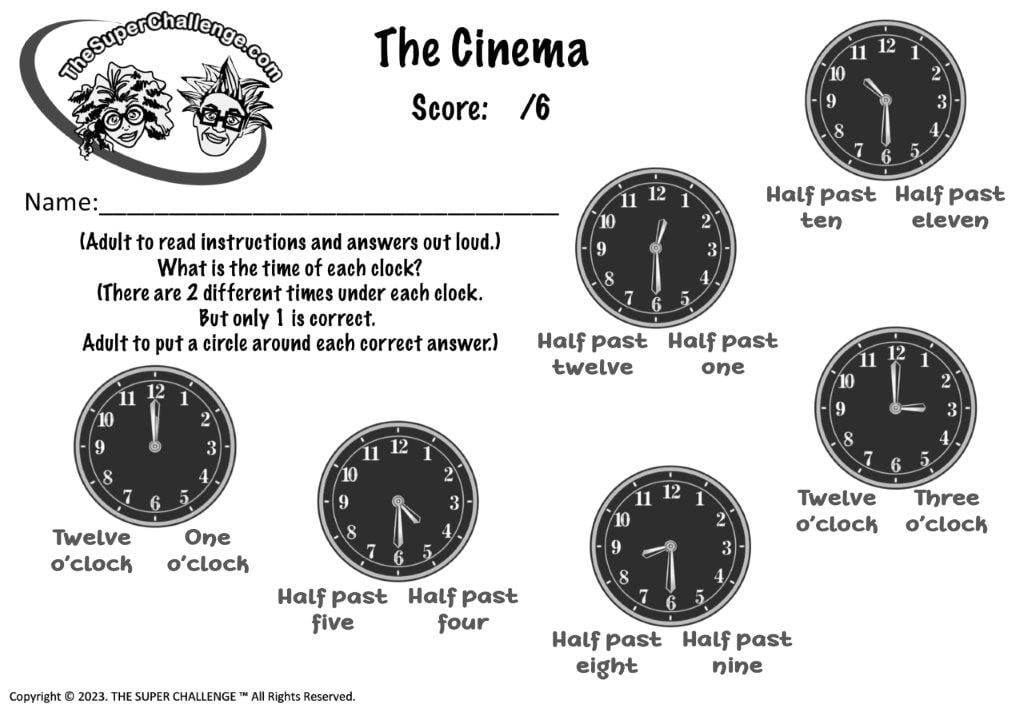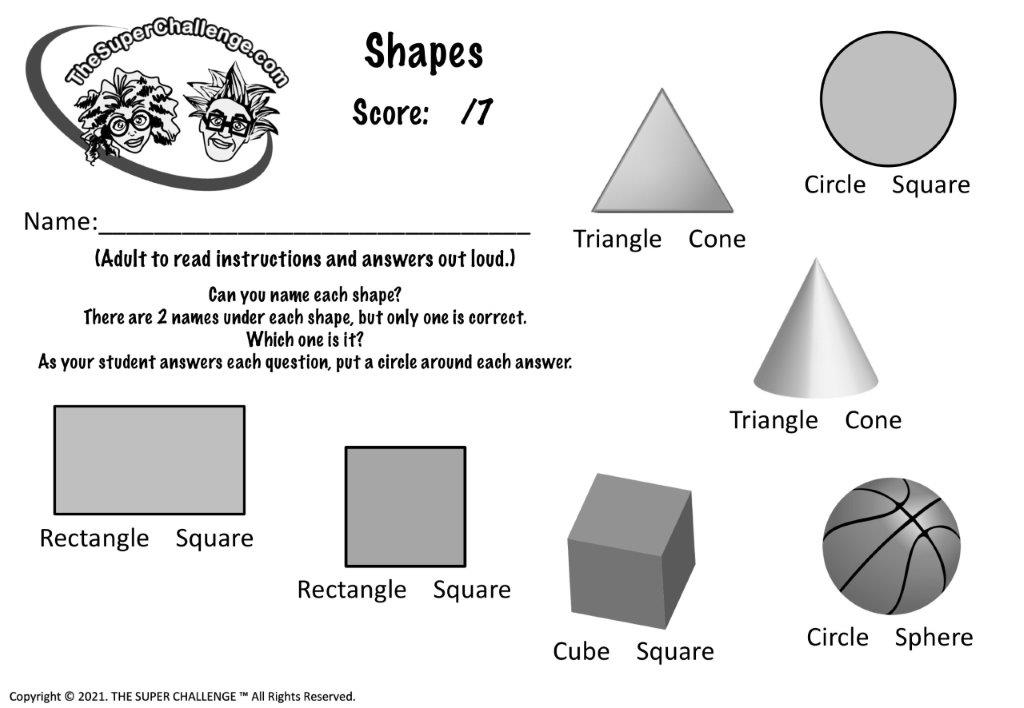YOUR SUPER CHALLENGE:
(Adult to read aloud.) Your challenge is to complete any 5 games from YOUR grade level. You may do any combination of Mid-level or Advanced level games as long as they are of YOUR grade. A game is only completed when you finish all the questions in the game. You may try some games first to see which ones you would like to play.
If you shut the game down, you will have to play from the start again. If you write down your answers on the worksheet as you play, you can catch up to where you left the game. (The worksheet is optional.)
Once you have fully finished 5 games, you have completed your challenge and may download your Certificate of Congratulations! But don’t stop there, challenge YOURSELF to see how many more games you can complete!
PARENTS & TUTORS:
The “Advanced Level” games are set at a level students aim to be at by the END of their school year. Please note, games are not designed to be played on Safari browsers and may not load. Plus, as students at this level cannot read, games need to be played with adult assistance. All games may be played on PC’s & laptops; however, some may also be played on tablets, see the listing under each game name.
Warning: Games are not designed to be played using the Safari browsers.
Games should only be played using a web browser such as Chrome, Firefox or Microsoft Edge.
Please open this website using one of these browsers.
It is also advised you have the latest version of the Chrome, Firefox or Microsoft Edge web browsers.
Grade 1- 2 Explained

DOLPHINS
GAME PLAYS ON: PC, LAPTOP & TABLET
Dolphins - Game Description
Ages: 6 – 7 years old
Suits: Grade 1 students in Australia, Canada, the U.S.A., and Year 2 students in England.
Developing strategies for simple addition and subtraction problems.
This is a simple and fun game helping students develop simple addition and subtraction skills. Students must place sets of dolphins around a triangular puzzle so that all sides add up to 8. It is a fun way for students to enjoy learning addition and subtraction. With the help of an adult, students are also introduced to reading and writing numbers in words.
Set underwater with lots of dolphin sounds it is very engaging game to play. Students will often play this game over and over, giving them lots of practice with addition and subtraction. It is designed to suit the Mathematics Curriculums of Australia, Canada, England and the U.S.A.
Teacher References:
(ACMNA015): Represent and solve simple addition and subtraction problems using a range of strategies including counting on, partitioning and rearranging parts. Developing a range of mental strategies for addition and subtraction problems.
Ref: Australian Curriculum Mathematics.
How To Play:
(Adult to read aloud.)
Dolphins are very clever! How clever are you? Can you solve this dolphin challenge? Place dolphins into the circles so every straight line adds up to 8. Drag numbers to move them. It can be tricky. Are you ready for the challenge?
Dolphins - Learning Outcomes
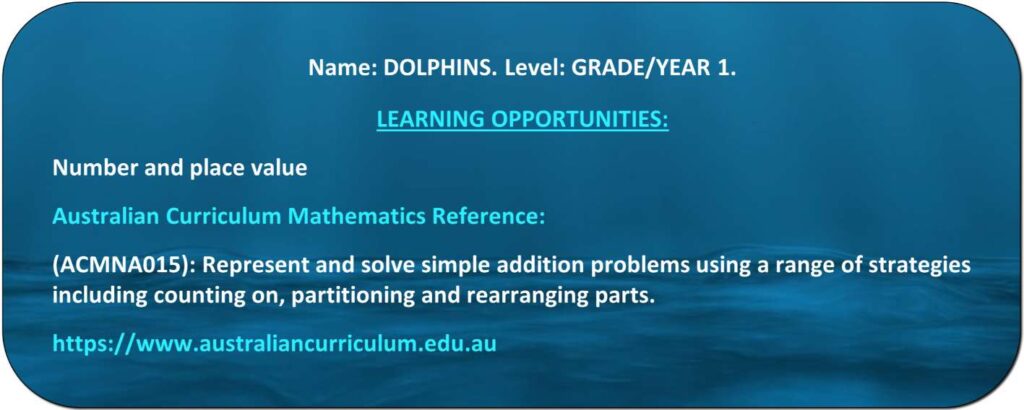
Dolphins - Worksheet
THE WALL
GAME PLAYS ON: PC & LAPTOP ONLY
The Wall - Game Description
Ages: 6 – 7 years old
Suits: Grade 1 students in Australia, Canada, the U.S.A., and Year 2 students in England.
Learning one-half is one of two equal parts of a whole.
This game helps students learn “one-half”. Students are asked to complete a fun puzzle that involves placing bricks into spaces of an uncompleted wall. As students place pieces into the spaces, they are asked to count how many bricks were put in, “half”, “one”, “one and a half” etc. A simple and fun way to learn about halves. It is designed to suit the Mathematics Curriculums of Australia, Canada, England and the U.S.A.
Teacher References:
(ACMNA016): Recognise and describe one-half as one of two equal parts of a whole.
(ACMMG019): Measure and compare the lengths of objects using uniform informal units.
Ref: Australian Curriculum Mathematics.
How To Play:
(Adult to read aloud.)
A storm has damaged your home, so you are fixing it. You need to put the bricks back into their correct positions. Can you say how many bricks you are putting in? Can you finish the wall? You may need to swap some pieces around. It’s more challenging than it looks. Are you ready for the challenge?
The Wall - Learning Outcomes
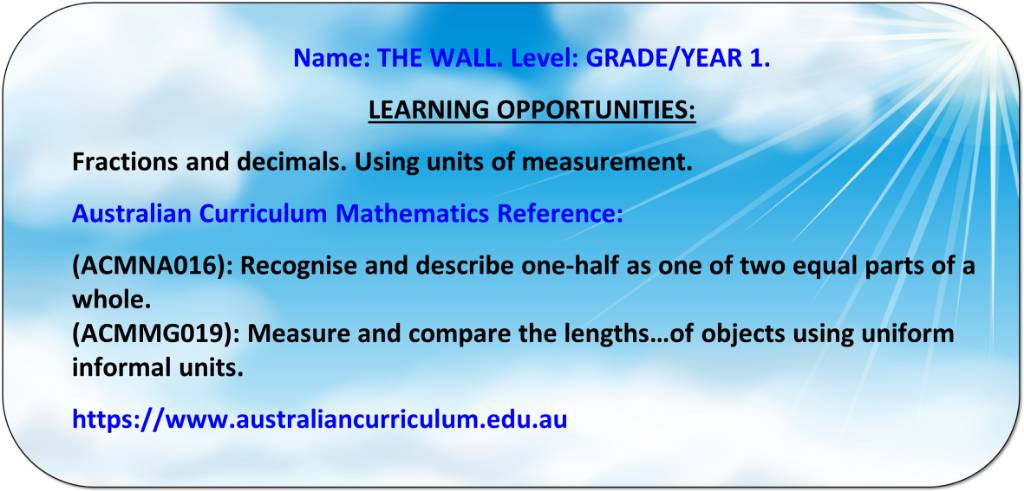
The Wall - Worksheet
APPLES AND ORANGES
GAME PLAYS ON: PC & LAPTOP ONLY
Apples and Oranges - Game Description
Ages: 6 – 7 years old
Suits: Grade 1 students in Australia, Canada, the U.S.A., and Year 2 students in England.
This game helps students learn new ways to add up, without using their fingers. Students are encouraged to use subitising as the basis for adding collections of numbers.
They are asked to count numbers of apples and oranges in trees while being careful not to mix up their results. The game is very calming, set in an orchard with sounds of birds. It is lots of fun as it includes many encouraging words to build student confidence. It is designed to suit the Mathematics Curriculums of Australia, Canada, England and the U.S.A.
Teacher References:
(ACMNA015): Represent and solve simple addition and subtraction problems using a range of strategies including counting on, partitioning and rearranging parts. Develop a range of mental strategies for addition and subtraction problems.
Ref: Australian Curriculum Mathematics.
How To Play:
(Adult to read aloud.)
Are you good at adding up? Can you count without using your fingers? How many apples and oranges can you see? It can be tricky adding up without using your fingers! Are you ready for the challenge?
Apples and Oranges - Learning Outcomes
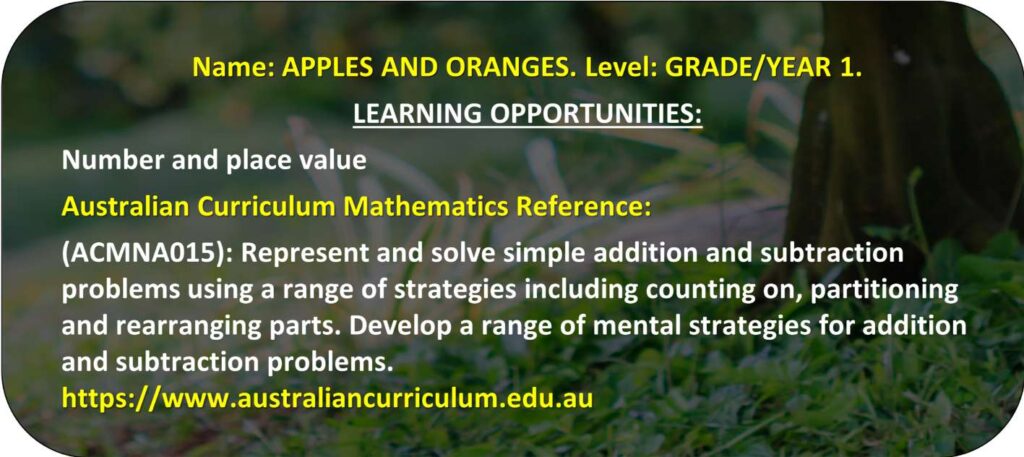
Apples and Oranges - Worksheet
POPSICLES
GAME PLAYS ON: PC, LAPTOP & TABLET
Popsicles - Game Description
Ages: 6 – 7 years old
Suits: Grade 1 students in Australia, Canada, the U.S.A., and Year 2 students in England.
This is a practical and fun game helping students to understand simple addition and subtraction.
This is the follow-on addition and subtraction game from the first super challenge #1, called Dolphins, for this age group. Students must add or remove popsicles from the freezer. They are then asked to calculate how many popsicles they have remaining. It is slightly harder than the original addition and subtraction game and a very practical and easy way for students to understand the concept.
The game is full of fun sounds and encouraging voice-overs and helps to build student confidence with learning mathematics. It is designed to suit the Mathematics Curriculums of Australia, Canada, England and the U.S.A.
Teacher References:
(ACMNA015): Represent and solve simple addition and subtraction problems using a range of strategies including counting on, partitioning and rearranging parts. Developing a range of mental strategies for addition and subtraction problems.
Ref: Australian Curriculum Mathematics.
How To Play:
(Adult to read aloud.)
Sometimes you put popsicles into the freezer, sometimes you take them out. First you are putting them in. Add up the TOTAL number of popsicles on a blue square. Drag your answer onto the yellow circle. Once you have done them all, your challenge will appear. Now you must take them out of the freezer! Are you ready for the challenge?
Popsicles - Learning Outcomes
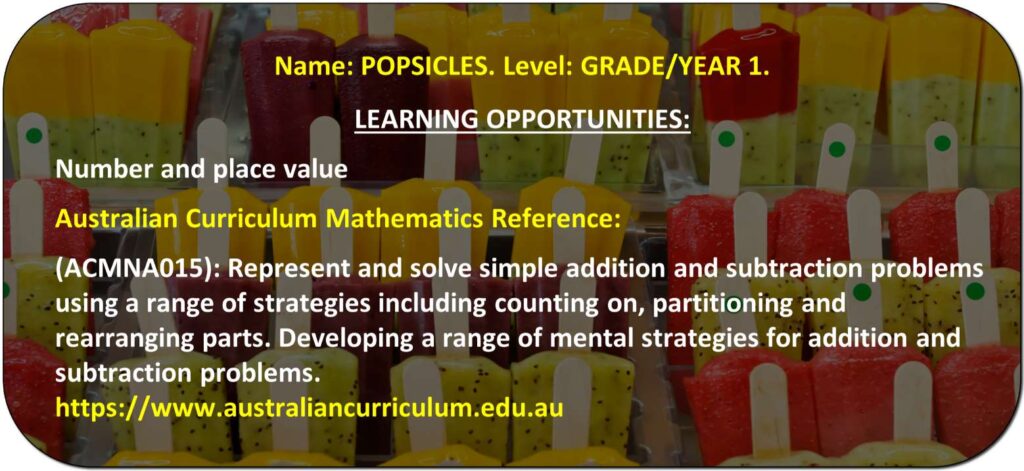
Popsicles - Worksheet
THE WORLD 1
GAME PLAYS ON: PC, LAPTOP & TABLET
The World 1 - Game Description
Ages: 6 – 7 years old
Suits: Grade 1 students in Australia, Canada, the U.S.A., and Year 2 students in England.
Learning how to count, skip-count and how to predict the next number in a number pattern.
This is an educational mathematics game helping students to develop confidence with number sequences and skip-counting by twos. It also helps students to identify the next number in a number pattern. The game uses very practical examples to help students understand this concept. For skip-counting by twos, students must put people of different cultures in order around the globe, according to their age.
Full of exciting sounds, it is a fun and engaging way for students to learn number sequences. It is designed to suit the Mathematics Curriculums of Australia, Canada, England and the U.S.A.
Teacher References:
(ACMNA012): Develop confidence with number sequences to and from 100 by ones from any starting point. Skip count by twos, fives and tens starting from zero.
(ACMNA018): Investigate and describe number patterns formed by skip-counting and patterns with objects. Using place-value patterns beyond the teens to generalise the number sequence and predict the next number. Investigating patterns in the number system, such as the occurrence of a particular digit in the numbers to 100.
Ref: Australian Curriculum Mathematics.
How To Play:
(Adult to read aloud.)
Numbers will appear. Then, can you put them around the world, in order, from smallest to largest? Then click the blue box to see if you are correct. Now for your challenge: Can you do it by 2’s? People from around the world will appear of different ages. Can you put them in order from youngest to oldest? Are you ready for the challenge?
The World 1 - Learning Outcomes
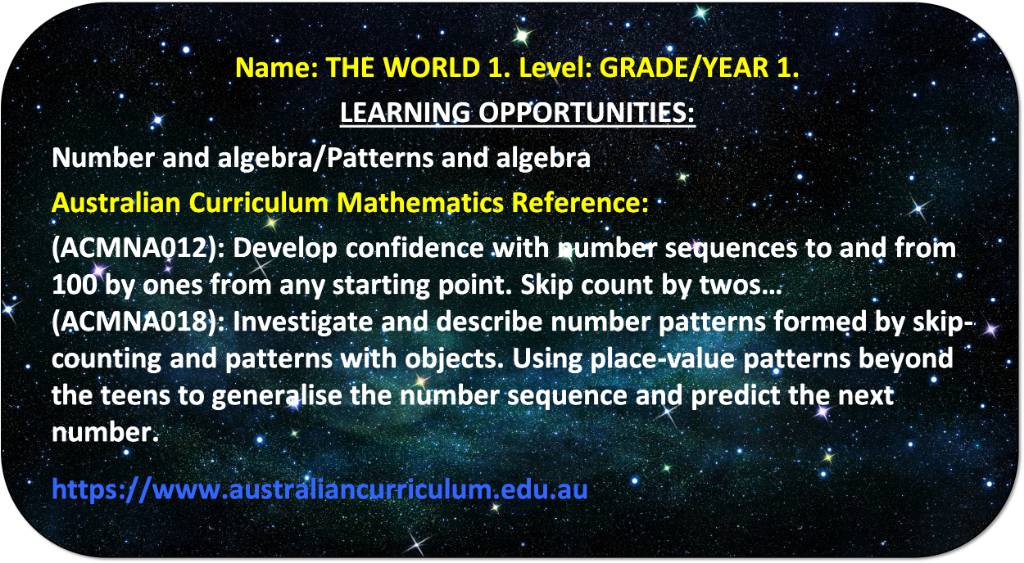
The World - Worksheet
GIRAFFES
GAME PLAYS ON: PC & LAPTOP ONLY
Giraffes - Game Description
Ages: 6 – 7 years old
Suits: Grade 1 students in Australia, Canada, the U.S.A., and Year 2 students in England.
Learning to solve simple addition problems.
This is an educational mathematics game helping students learn addition. Students must solve simple addition problems using partitioning and rearranging parts.
Set in Africa with sounds of the jungle, it is an engaging game of mid-range difficulty and a fun way to learn how to add up. Students are asked to make giraffes from tallest to shortest. Each giraffe comes in 2 pieces and there are several combinations possible. Students find this game both challenging and fun as it keeps them fully engaged trying to solve the puzzle. It is designed to suit the Mathematics Curriculums of Australia, Canada, England and the U.S.A.
Teacher References:
(ACMNA015): Represent and solve simple addition problems using partitioning and rearranging parts.
(ACMNG019): Compare the lengths (heights) of pairs of objects using uniform informal units.
Ref: Australian Curriculum Mathematics.
How To Play:
(Adult to read aloud.)
Can you make 4 giraffes? You must make them in order from tallest to shortest. It’s harder than it looks as you may have to swap pieces around until you have them all correct. Are you ready for the challenge?
Giraffes - Learning Outcomes
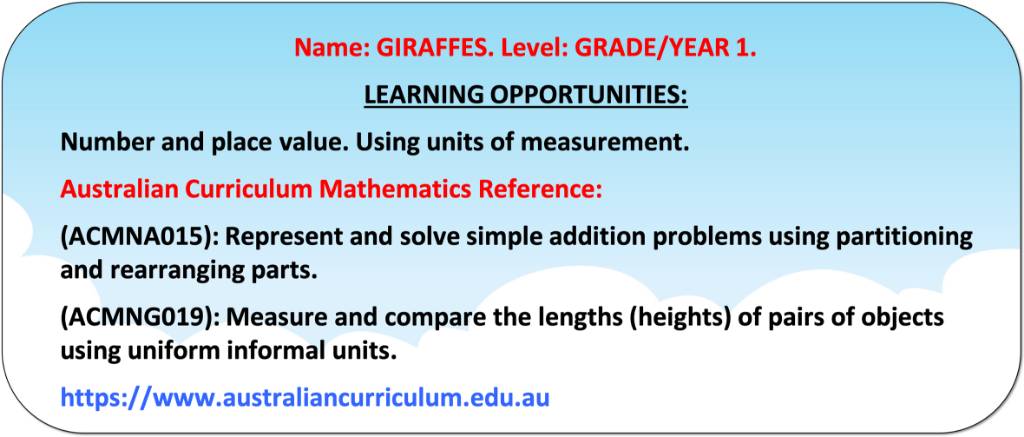
Giraffes - Worksheet
THE POND
GAME PLAYS ON: PC, LAPTOP & TABLET
The Pond - Game Description
Ages: 6 – 7 years old
Suits: Grade 1 students in Australia, Canada, the U.S.A., and Year 2 students in England.
Using partitioning to help with addition and subtraction.
This game helps students to learn how to split numbers into smaller parts to make them easier to work with. It is the follow-on game from the super challenge game #4 called Popsicles. Students must place sets of frogs onto leaves to make them total up to a number given. It is slightly harder than the game Popsicles and a very practical and easy way for students to understand the concept of partitioning.
Full of sounds of frogs and nature, it is a fun and engaging way for students to learn. It is designed to suit the Mathematics Curriculums of Australia, Canada, England and the U.S.A.
Teacher References:
(ACMNA015): Represent and solve simple addition and subtraction problems using a range of strategies including counting on, partitioning and rearranging parts. Developing a range of mental strategies for addition and subtraction problems.
Ref: Australian Curriculum Mathematics.
How To Play:
(Adult to read aloud.)
While out walking, you found a pond full of frogs. Can you count them? Each leaf has a number on it. Place two sets of frogs onto each leaf. The TOTAL number of frogs must match each number. Are you ready for the challenge?
The Pond - Learning Outcomes

The Pond - Worksheet
CRAZY TRAIN
GAME PLAYS ON: PC & LAPTOP ONLY
Crazy Train - Game Description
Ages: 6 – 7 years old
Suits: Grade 1 students in Australia, Canada, the U.S.A., and Year 2 students in England.
Learning to read the time to the half-hour on analogue and digital clocks.
This game helps students learn how to read the time to the half-hour and observing the characteristics of half-hour times. It is lots of fun and is set around catching the train. A simple and fun way to learn reading the time.
It is full of encouraging words building student confidence. The game is designed to suit the Mathematics Curriculums of Australia, Canada, England and the U.S.A.
Teacher References:
(ACMMG020): Tell time to the half-hour.
Reading time on analogue and digital clocks and observing the characteristics of half-hour times.
Ref: Australian Curriculum Mathematics.
How To Play:
(Adult to read aloud.)
Your class is going on a train ride. But your teacher is late! He read the time wrong. Silly teacher! Can you read time? Let’s find out. It can be tricky. Are you ready for the challenge?
The World - Learning Outcomes

Crazy Train - Worksheet
ONE HALF
GAME PLAYS ON: PC, LAPTOP & TABLET
One-Half - Game Description
Ages: 6 – 7 years old
Suits: Grade 1 students in Australia, Canada, the U.S.A., and Year 2 students in England.
This is an educational mathematics game helping students learn “one-half” and “one-quarter” of objects.
The game is set around a huge beach ball. Students are on an excursion to the beach to visit the worlds biggest ball. They must complete pictures of the ball by putting missing pieces into position.
It is lots of fun as it includes many encouraging words to build student confidence. It is designed to suit the Mathematics Curriculums of Australia, Canada, England and the U.S.A.
Teacher References:
(ACMA058): Model and represent unit fractions and their multiples to a complete whole. (This game is for students to understand the unit fractions of 1/2 & 1/4.)
Ref: Australian Curriculum Mathematics.
How To Play:
(Adult to read aloud.)
You are at the beach on a school excursion. The world’s biggest beach ball is there! For this challenge, pictures of the ball have been divided into different size pieces. Can you put each picture back together to make each ball WHOLE again? Are you ready for the challenge?
One Half - Learning Outcomes
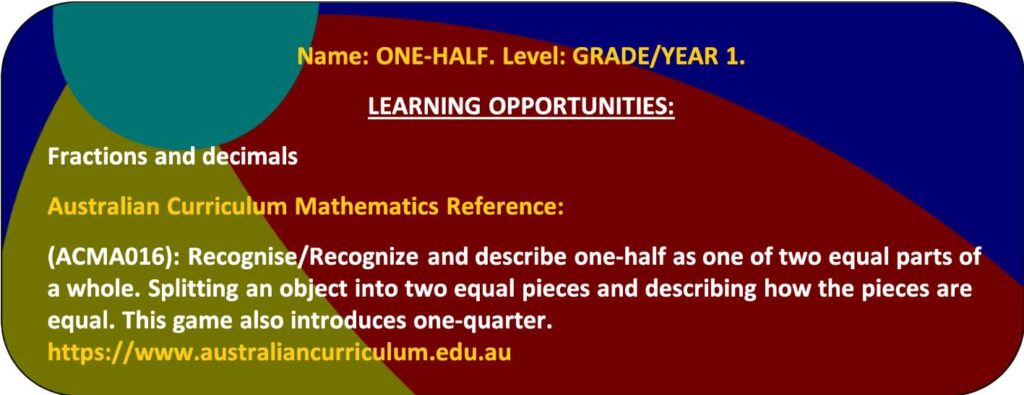
One Half - Worksheet
ICE CREAM – AUSTRALIA
GAME PLAYS ON: PC, LAPTOP & TABLET
Ice Cream - Australia - Game Description
Ages: 6 – 7 years old
Suits: Grade 1 students in Australia.
This is a practical and fun way for Grade 1 students to learn values of Australian coins.
This game helps Grade 1 students to identify values of coins. It also introduces students to making simple purchases. It teaches them to order values in collections of coins and is also a good introduction to addition. Part B of this game includes the addition of 2 coins.
The game is loads of fun and filled with comical voice-overs and sounds. It is full of positive and encouraging words to build mathematical confidence and is designed to suit the Mathematics Curriculum of Australia.
Teacher References:
(ACMNA017): Recognise, describe and order coins according to their value. Note: Part B of this game is a good gauge for teachers to assess how well a student understands coin values.
Ref: Australian Curriculum Mathematics.
How To Play:
(Adult to read aloud.)
Ice creams are on SALE, so you buy them all. First choose an ice cream to buy. Then choose the correct coin and put it under the ice cream. Drag it to the blue circle. When you have bought them all, a challenge will appear! Are you ready for the challenge?
Ice Cream - Australia - Learning Outcomes
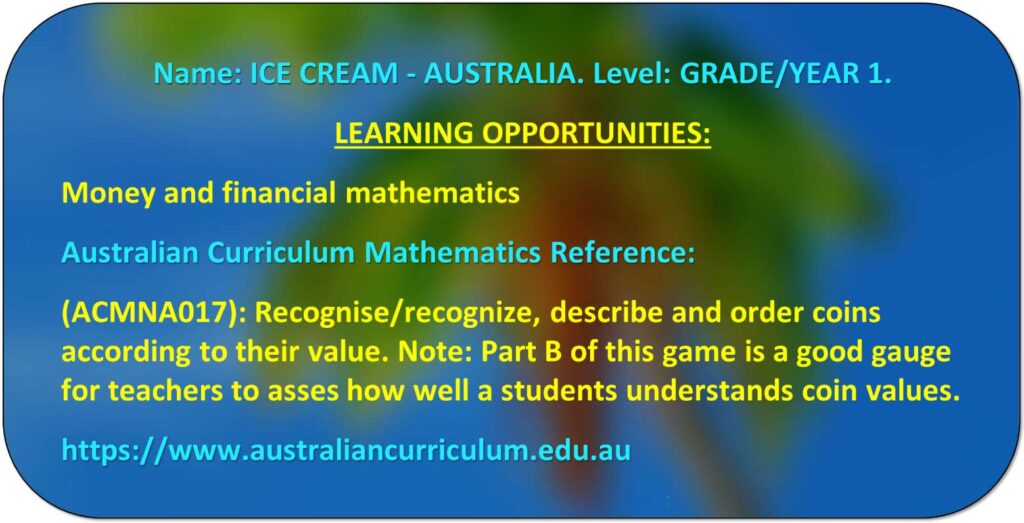
Ice Cream - Australia - Worksheet
ICE CREAM – CANADA
GAME PLAYS ON: PC, LAPTOP & TABLET
Ice Cream - Canada - Game Description
Ages: 6 – 7 years old
Suits: Grade 1 students in Canada.
This is a practical and fun way for first grade students to learn values of Canadian coins.
This game helps first grade students to identify values of coins. It also introduces students to making simple purchases. It teaches them to order values in collections of coins and is also a good introduction to addition. Part B of this game includes the addition of 2 coins.
The game is lots of fun and filled with comical voice-overs and sounds. It is full of positive and encouraging words to build mathematical confidence and is designed to suit the Mathematics Curriculum of Canada.
Teacher References:
(ACMNA017): Recognize, describe and order coins according to their value. Note: Part B of this game is a good gauge for teachers to assess how well a student understands coin values.
Ref: Australian Curriculum Mathematics.
How To Play:
(Adult to read aloud.)
Ice creams are on SALE, so you buy them all. First choose an ice cream to buy. Then choose the correct coin and put it under the ice cream. Drag it to the blue circle. When you have bought them all, a challenge will appear! Are you ready for the challenge?
Ice Cream - Canada - Learning Outcomes
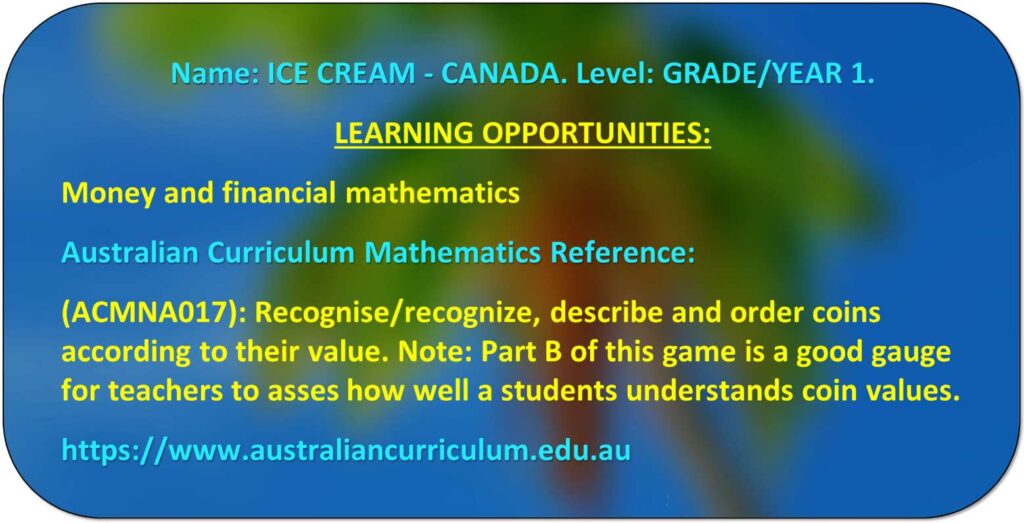
Ice Cream - Canada - Worksheet
ICE CREAM – ENGLAND
GAME PLAYS ON: PC, LAPTOP & TABLET
Ice Cream - England - Game Description
Ages: 6 – 7 years old
Suits: Year 2 students in England.
This is a practical and fun way for Year 2 students to learn values of English coins.
This game helps students to identify values of coins. It also introduces students to making simple purchases. It teaches them to order values in collections of coins and is also a good introduction to addition. Part B of this game includes the addition of 2 coins.
It is loads of fun and filled with comical voice-overs and sounds. The game is full of positive and encouraging words to build mathematical confidence.
It is designed to suit the Mathematics Curriculum of England.
Teacher References:
(ACMNA017): Recognise, describe and order coins according to their value. Note: Part B of this game is a good gauge for teachers to assess how well a student understands coin values.
Ref: Australian Curriculum Mathematics.
How To Play:
(Adult to read aloud.)
Ice creams are on SALE, so you buy them all. First choose an ice cream to buy. Then choose the correct coin and put it under the ice cream. Drag it to the blue circle. When you have bought them all, a challenge will appear! Are you ready for the challenge?
Ice Cream - England - Learning Outcomes
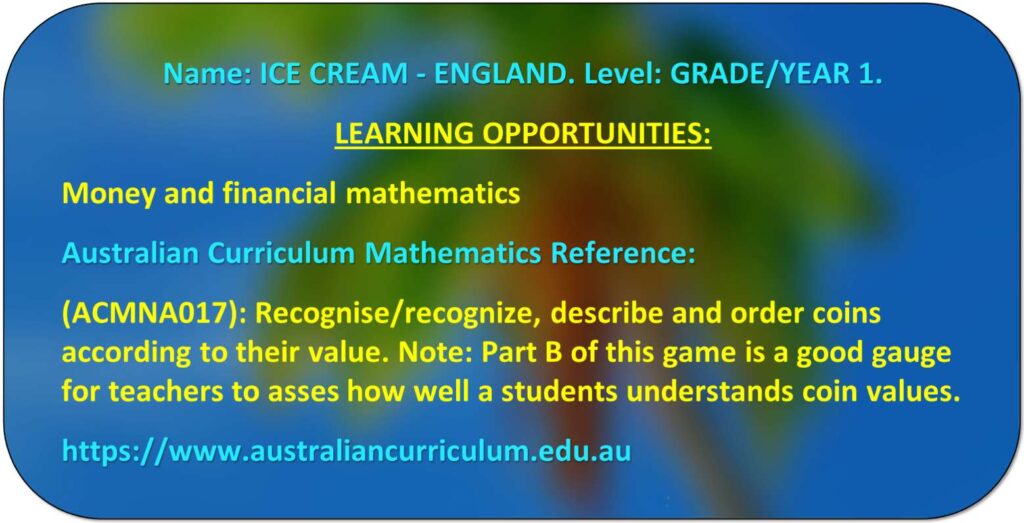
Ice Cream - England - Worksheet
ICE CREAM – USA
GAME PLAYS ON: PC, LAPTOP & TABLET
Ice Cream - USA - Game Description
Ages: 6 – 7 years old
Suits: Grade 1 students in the U.S.A.
This is a practical and fun way for first grade students to learn values of U.S.A. coins.
This is an educational mathematics game helping first grade students to identify values of coins. It also introduces students to making simple purchases. It teaches them to order values in collections of coins and is also a good introduction to addition. Part B of this game includes the addition of coins.
The game is loads of fun and filled with comical voice-overs and sounds. It is full of positive and encouraging words to build mathematical confidence and is designed to suit the Mathematics Curriculum of the U.S.A.
Teacher References:
(ACMNA017): Recognize, describe and order coins according to their value. Note: Part B of this game is a good gauge for teachers to assess how well a student understands coin values.
Ref: Australian Curriculum Mathematics.
How To Play:
(Adult to read aloud.)
Ice creams are on SALE, so you buy them all. First choose an ice cream to buy. Then choose the correct coin and put it under the ice cream. Drag it to the blue circle. When you have bought them all, a challenge will appear! Are you ready for the challenge?
Ice Cream - USA - Learning Outcomes
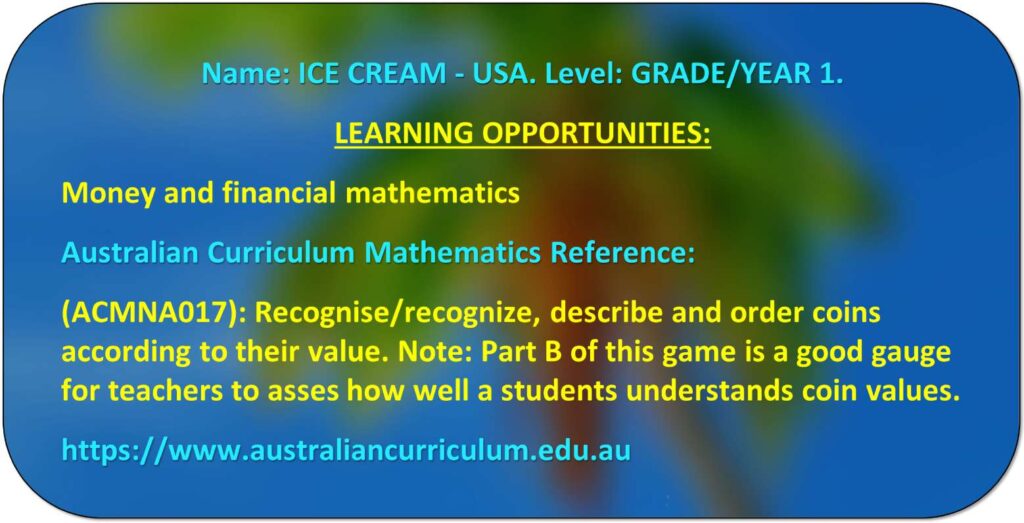
Ice Cream - USA - Worksheet
BUTTERFILES
GAME PLAYS ON: PC, LAPTOP & TABLET
Butterflies - Game Description
Ages: 6 – 7 years old
Suits: Grade 1 students in Australia, Canada, the U.S.A., and Year 2 students in England.
This is a practical and fun game helping students to understand addition with numbers totaling up to 20.
This game helps students to learn how to add numbers. It is the follow-on game from the super challenge game #7 called The Pond. Students must place sets of butterflies onto flowers to make them add up to a number given. It is also very practical and easy way for students to understand the concept of partitioning, i.e. how to split numbers into smaller parts to make them easier to work with.
Full of sounds of nature, it is a fun and engaging way for students to learn. It is designed to suit the Mathematics Curriculums of Australia, Canada, England and the U.S.A.
Teacher References:
(ACMNA015): Represent and solve simple addition and subtraction problems including counting on, partitioning and rearranging parts, (numbers from 13 – 20).
(ACMNA014): Count by partitioning numbers using place value. Understanding partitioning of numbers and the importance of grouping in tens.
Ref: Australian Curriculum Mathematics.
How To Play:
(Adult to read aloud.)
You are walking in a field and you are looking at all the beautiful butterflies. Let’s count them together. Each flower has a number on it. Let’s place two sets of butterflies onto each flower. The TOTAL number of butterflies must match each number. Are you ready for the challenge?
The World - Learning Outcomes
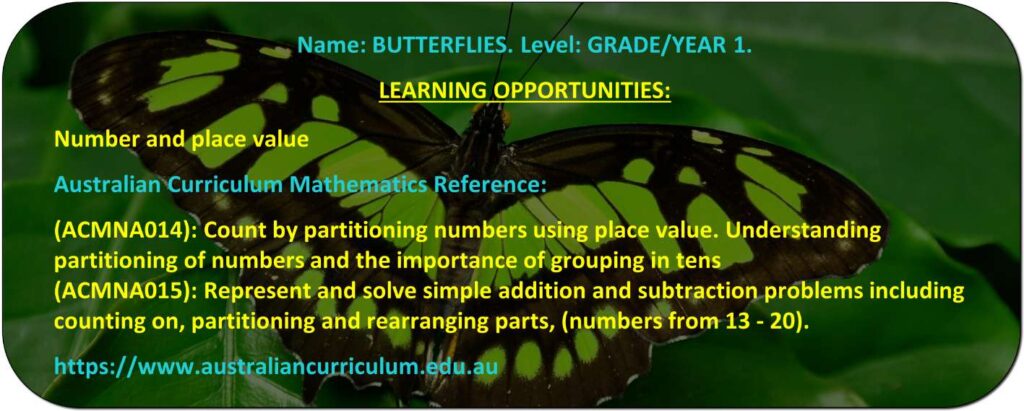
Butterfiles - Worksheet
PARTS OF SHAPES
GAME PLAYS ON: PC & LAPTOP ONLY
Parts of Shapes - Game Description
Ages: 6 – 7 years old
Suits: Grade 1 students in Australia, Canada, the U.S.A., and Year 2 students in England.
Learning features of two- & three-dimensional shapes.
This is an educational mathematics game helping students identify features of two-dimensional shapes and three-dimensional objects. Focusing on geometric features and describing shapes and objects using everyday words such as ‘corners’, ‘edges’ and ‘faces’.
Set on the beach with calming sounds of waves and seagulls, it is a fun way to learn features of shapes. Students are asked to count the number of corners, edges or faces of shapes and objects.
It is designed to suit the Mathematics Curriculums of Australia, Canada, England and the U.S.A.
Teacher References:
(ACMMG022): Recognise and classify familiar two-dimensional shapes and three-dimensional objects using obvious features.
Focusing on geometric features and describing shapes and objects using everyday words such as ‘corners’, ‘edges’ and ‘faces’.
Ref: Australian Curriculum Mathematics.
How To Play:
(Adult to read aloud.)
You are walking on the beach picking up shells. You notice they are all different shapes. Some have corners, some have edges. Do you know your shapes? Let’s find out! Can you count how many corners, edges or faces some shapes have? Do you know what the face of a shape means? Are you ready for the challenge?
Parts of Shapes - Learning Outcomes
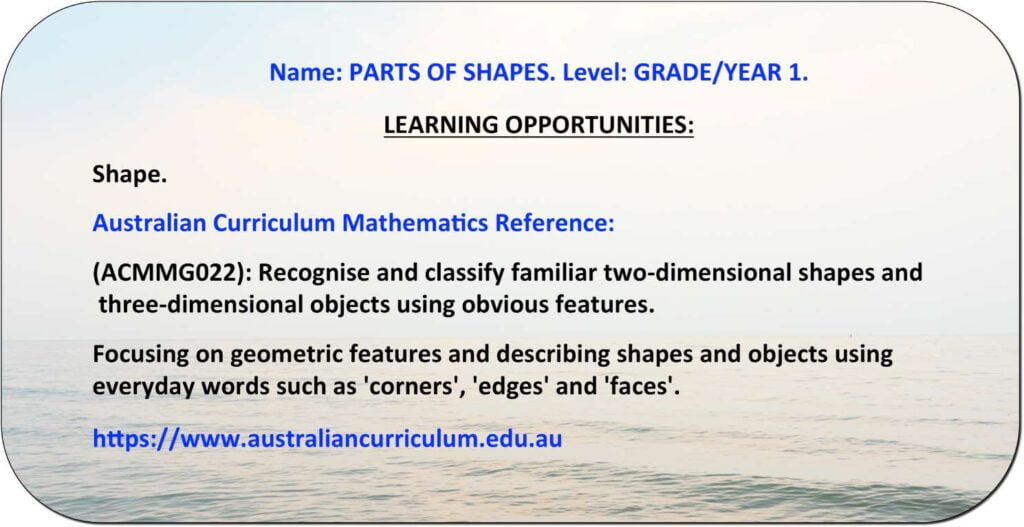
Parts of Shapes - Worksheet
SMILING FACES
GAME PLAYS ON: PC, LAPTOP & TABLET
Smiling Faces - Game Description
Ages: 6 – 7 years old
Suits: Grade 1 students in Australia, Canada, the U.S.A., and Year 2 students in England.
Teaching students one-half as one of two equal parts of a whole and introducing one-quarter.
The use of smiling faces makes these concepts simple and easy to understand and is a very effective way for students to begin learning fractions.
Full of encouraging words building student confidence, it is so much fun it is often played over and over again. The game is designed to suit the Mathematics Curriculums of Australia, Canada, England and the U.S.A.
Teacher References:
(ACMNA016): Recognise and describe one-half as one of two equal parts of a whole. Splitting an object into two equal pieces and describing how the pieces are equal. (This game also includes quarters.)
Ref: Australian Curriculum Mathematics.
How To Play:
(Adult to read aloud.)
Everyone loves to smile, so let’s make smiling faces. Drag pieces to complete each face. No guessing! You must get the answer correct on your first or second try, otherwise the GAME STARTS AGAIN! Are you ready for the challenge? Let’s find out!
Smiling Faces - Learning Outcomes

Smiling Faces - Worksheet
LOLLIPOPS
GAME PLAYS ON: PC, LAPTOP & TABLET
Lollipops - Game Description
Ages: 6 – 7 years old
Suits: Grade 1 students in Australia, Canada, the U.S.A., and Year 2 students in England.
Understanding and learning the language of outcomes in chance.
This is an educational mathematics game helping students understand “chance”. Students are asked to identify outcomes of events. They are asked to use everyday language such as ‘will happen’, ‘won’t happen’, or ‘might happen’. This game helps students to identify that some events are certain or impossible. Using lollipops in jars as examples, it is very easy to understand and a very effective way for students to learn and describe chance outcomes.
It is designed to suit the Mathematics Curriculums of Australia, Canada, England and the U.S.A.
Teacher References:
(ACMSP024): Identify outcomes of familiar events involving chance and describe them using everyday language such as ‘will happen’, ‘won’t happen’, or ‘might happen’. Main focus: Justifying that some events are certain or impossible.
Ref: Australian Curriculum Mathematics.
How To Play:
(Adult to read aloud.)
Do you like lollipops? Here is a lollipop challenge for you! Can you pull out a red one? Close your eyes. Then put your hand into one of the jars and mix the lollipops up and pull one of them out. What is the chance of getting a red lollipop? You will be given 4 answer choices, but only 1 is correct! Choose one of the answers. Drag your answer to the yellow circle to see if you are correct. You will be challenged!
Lollipops - Learning Outcomes
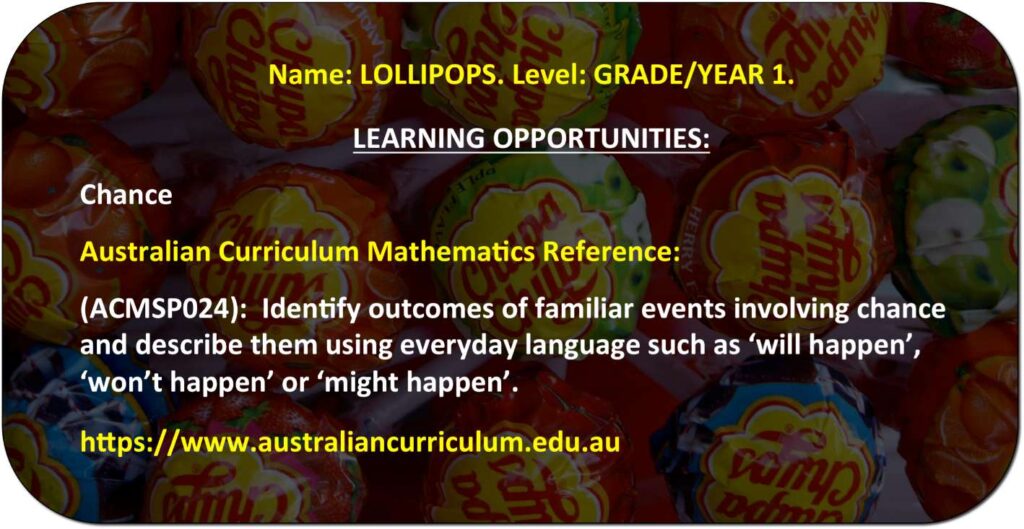
Lollipops - Worksheet
THE MOON
GAME PLAYS ON: PC & LAPTOP ONLY
The Moon - Game Description
Ages: 6 – 7 years old
Suits: Grade 1 students in Australia, Canada, the U.S.A., and Year 2 students in England.
This game helps students learn new ways to add up, without using their fingers. Students are encouraged to use subitising as the basis for adding collections of numbers.
They are asked to count the number of dots on set of dice. Dice are used as they are commonly used in games and therefore are easily understood by students at this level.
The game is very calming, set at night with sounds of owls and crickets. It is lots of fun as it includes many encouraging words to build student confidence. It is designed to suit the Mathematics Curriculums of Australia, Canada, England and the U.S.A.
Teacher References:
(ACMNA014): Count collections by partitioning numbers using place value. Understanding two-digit numbers are comprised of tens and ones/units.
Ref: Australian Curriculum Mathematics.
How To Play:
(Adult to read aloud.)
Can you see dots on the moon? Do you know how to count dots? Click on a set of dots. Count them. How many can you see? It can be tricky adding up without using your fingers! Are you ready for the challenge?
The Moon - Learning Outcomes
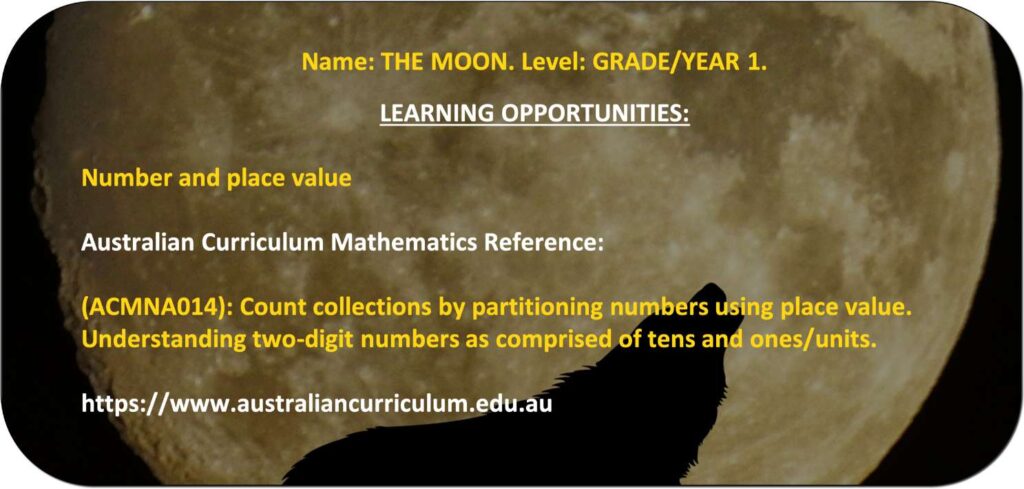
The Moon - Worksheet
HOT AIR BALLOONS
GAME PLAYS ON: PC & LAPTOP ONLY
Hot Air Balloons - Game Description
Ages: 6 – 7 years old
Suits: Grade 1 students in Australia, Canada, the U.S.A., and Year 2 students in England.
This is an educational mathematics game helping students learn partitioning of numbers and the importance of grouping in tens. It also teaches students, two-digit numbers as comprised of tens and ones.
The game is set around a hot-air balloon ride. It is lots of fun as it includes many encouraging words to build student confidence. It is the last and most challenging game of the series. It is designed to suit the Mathematics Curriculums of Australia, Canada, England and the U.S.A.
Teacher References:
(ACMNA014): Count collections to 100 by partitioning numbers using place value.
Ref: Australian Curriculum Mathematics.
How To Play:
(Adult to read aloud.)
You are going on a hot-air balloon ride. As you are on the ride you can see lots of other balloons, so you count them. You have counted them in groups, can you add up the groups to get the total? Let’s find out! It can be tricky. Are you ready for the challenge?
Hot Air Balloons - Learning Outcomes
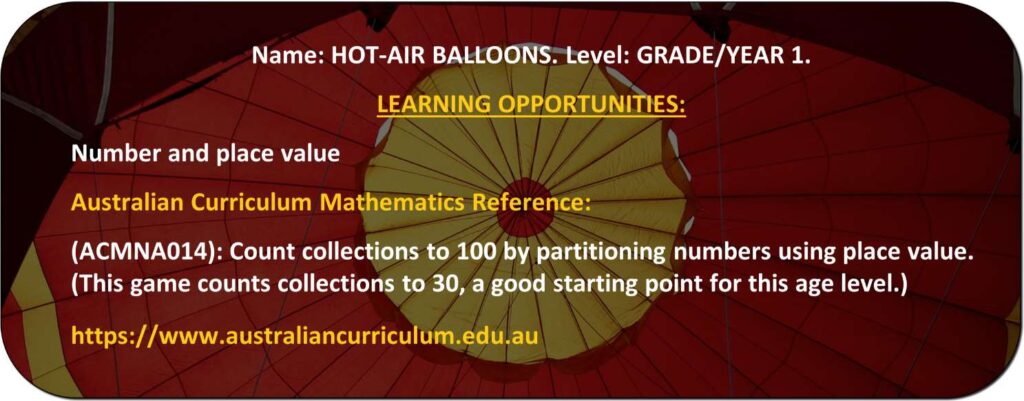
Hot Air Balloons - Worksheet
FROGS
GAME PLAYS ON: PC & LAPTOP ONLY
Frogs - Game Description
Ages: 6 – 7 years old
Suits: Grade 1 students in Australia, Canada, the U.S.A., and Year 2 students in England.
Introducing simple addition and subtraction problems.
This is an educational mathematics game helping students to learn about simple addition and subtraction. Subtraction a very challenging concept for this age group. The game uses easy to understand examples and diagrams to help students.
Full of exciting sounds, it is a fun and engaging way for students to learn a difficult topic. It is designed to suit the Mathematics Curriculums of Australia, Canada, England and the U.S.A.
Teacher References:
(ACMNA015): Represent and solve simple addition and subtraction problems using a range of strategies including counting on, partitioning and rearranging parts. Developing a range of mental strategies for addition and subtraction problems.
Ref: Australian Curriculum Mathematics.
How To Play:
(Adult to read aloud.)
You are counting frogs in ponds for a school project. Click on a NUMBER. Count the number of frogs. Choose the correct answer. Then DRAG your answer to the number above. You must get the answer correct on your first or second try, otherwise, the GAME STARTS AGAIN! Are you ready for the challenge?
Frogs - Learning Outcomes
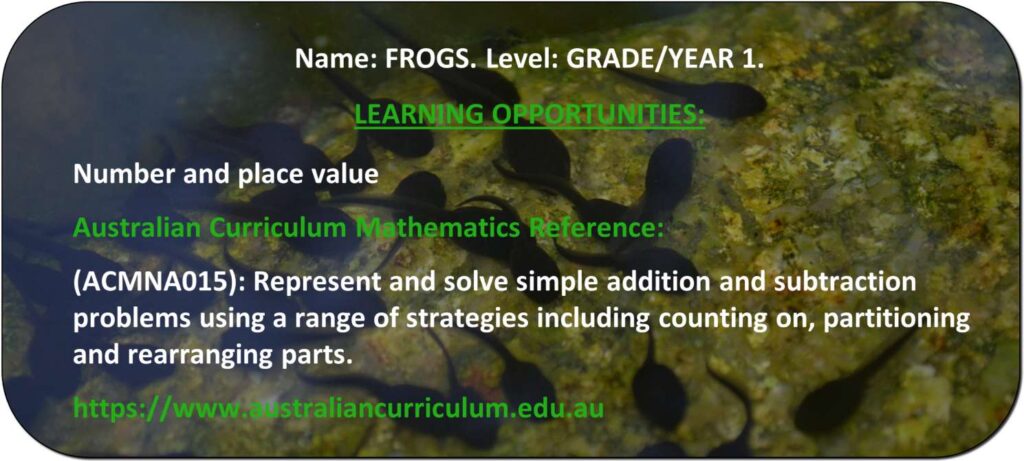
Frogs - Worksheet
THE CINEMA
GAME PLAYS ON: PC & LAPTOP ONLY
The Cinema - Game Description
Ages: 6 – 7 years old
Suits: Grade 1 students in Australia, Canada, the U.S.A., and Year 2 students in England.
Learning to read the time to the half-hour on analogue clocks.
This game helps students learn how to read the time to the half-hour and observing the characteristics of half-hour times. It is lots of fun and is set around going to the movies.
It is full of encouraging words building student confidence. The game is designed to suit the Mathematics Curriculums of Australia, Canada, England and the U.S.A.
Teacher References:
(ACMMG020): Tell time to the half-hour.
Reading time on analogue and digital clocks and observing the characteristics of half-hour times. (This game is focused on analogue clocks.)
Ref: Australian Curriculum Mathematics.
How To Play:
(Adult to read aloud.)
You are going to the cinema to watch a movie. What time does the movie start? Can you read the time? Click on one of the clocks. Only one of the 4 times you are given is correct. You must find the correct time. Are you ready for the challenge?
The Cinema - Learning Outcomes
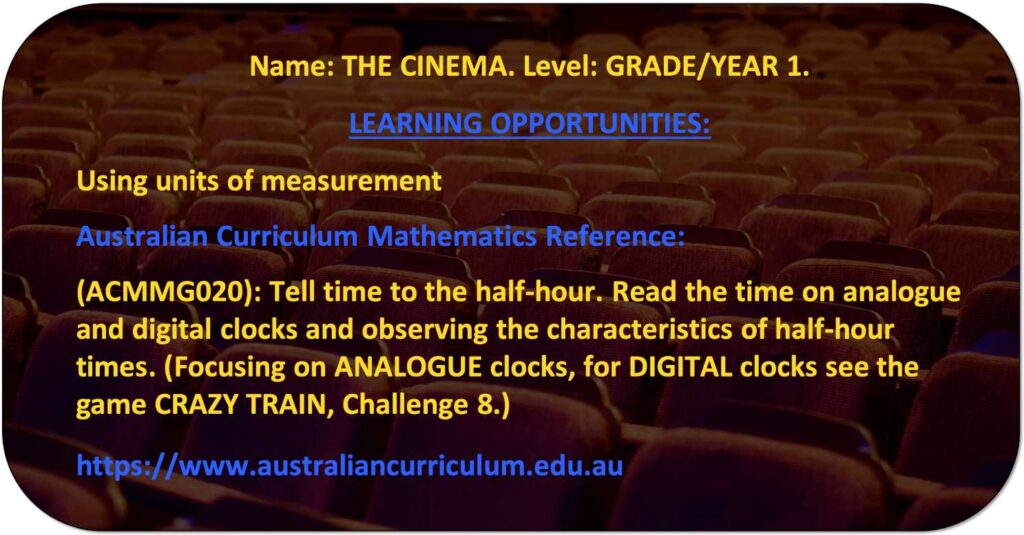
The Cinema - Worksheet
STAR STICKERS
GAME PLAYS ON: PC & LAPTOP ONLY
Star Stickers - Game Description
Ages: 6 – 7 years old
Suits: Grade 1 students in Australia, Canada, the U.S.A., and Year 2 students in England.
Introducing partitioning to solve simple addition. This game also introduces simple multiplication.
This is an educational mathematics game helping students to learn about simple addition and multiplication. The game uses very practical examples to help students understand this concept. With the help of an adult, students are asked to calculate how many stickers in total students are to receive so they may evenly share them. It is also a very practical way to introduce number multiplication to this age group.
Full of exciting sounds, it is a fun and engaging way for students to learn a difficult topic. It is designed to suit the Mathematics Curriculums of Australia, Canada, England and the U.S.A.
Teacher References:
(ACMNA015): Represent and solve simple addition and subtraction problems using a range of strategies including counting on, partitioning and rearranging parts. Developing a range of mental strategies for addition and subtraction problems.
Ref: Australian Curriculum Mathematics.
How To Play:
(Adult to read aloud.)
Your teacher is giving away stickers to the best students. You are one of them! Click on a group of students. Work out the TOTAL number of stickers they need. Only 1 of the 4 answers given is correct.! Are you ready for the challenge?
Star Stickers - Learning Outcomes
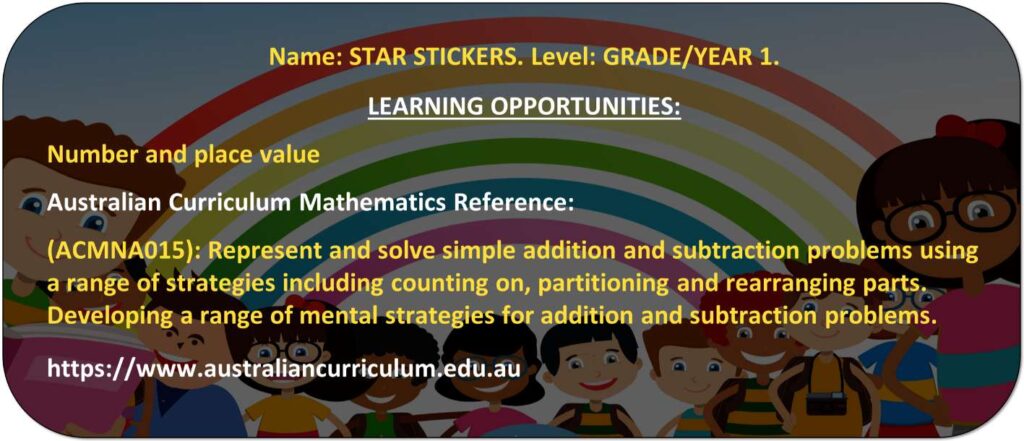
Star Stickers - Worksheet
SHAPES
GAME PLAYS ON: PC & LAPTOP ONLY
Shapes - Game Description
Ages: 6 – 7 years old
Suits: Grade 1 students in Australia, Canada, the U.S.A., and Year 2 students in England.
Learning features of two- & three-dimensional shapes.
This is an educational mathematics game helping students identify the names of two-dimensional shapes and three-dimensional objects.
Set in the forest with fairies, it is a fun way to learn the names of of shapes. It is designed to suit the Mathematics Curriculums of Australia, Canada, England and the U.S.A.
Teacher References:
(ACMMG022): Recognise and classify familiar two-dimensional shapes and three-dimensional objects using obvious features.
Ref: Australian Curriculum Mathematics.
How To Play:
(Adult to read aloud.)
Do you know your shapes? What shape is a ball? Let’s play and find out. Can you remember names of shapes? Are you ready for the challenge?
Shapes - Learning Outcomes
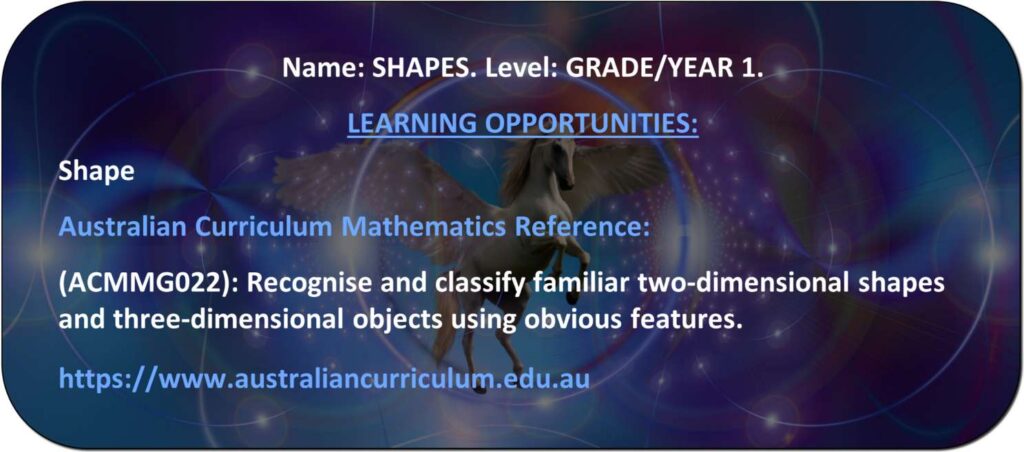
Shapes - Worksheet
By the end of Grade 1, students describe number sequences resulting from skip counting by 2s, 5s and 10s. They identify representations of one-half. They recognise coins according to their value. Students explain time durations. They describe two-dimensional shapes and three-dimensional objects. Students describe data display. Students count to and from 100 and locate numbers on a number line. They carry out simple additions and subtractions using counting strategies. They partition numbers using place value. They continue simple patterns involving numbers and objects. Students order objects based on lengths and capacities using informal units. They tell time to the half-hour. They use the language of direction to move from place to place. Students classify outcomes of simple familiar events. They collect data by asking questions, draw simple data displays and make simple inferences.
https://www.australiancurriculum.edu.au


